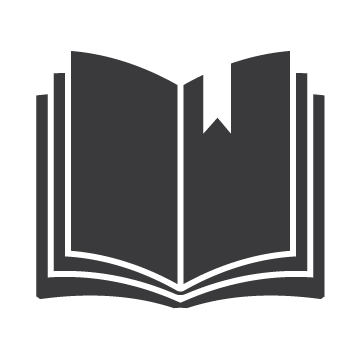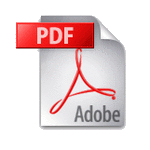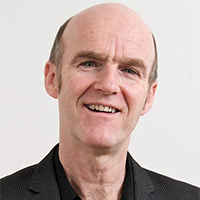
Robin Daly is the Chairman and the Founder of the UK charity Yes to Life. His experience supporting his daughter Bryony through cancer three times, until her early death at age 23, made him acutely aware of the shortcomings of UK cancer care, in terms of patient choice and patient-centred care. Yes to Life was set up specifically to address these shortcomings, and for over a decade it has provided direct support to people with cancer in building and pursuing their own integrative treatment plans.
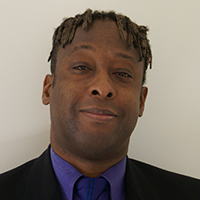
André Young-Snell studied conventional medicine at Guy’s Hospital Medical School, London and qualified in 1988. Though specialising in Parkinson’s disease, he covered many fields at some of the UK’s top hospitals, including Addenbrooke’s, Cambridge, Whipps Cross, Barts and Guys, London and Brighton. After much deliberation, in 2002 he decided to set up his own clinic, the Vision of Hope in Brighton, where he could specialise in metabolic protocols. He strongly believes that the patient’s mindset is of utmost importance to his or her recovery; he recommends focusing on setting goals, ways of expressing gratitude, making space for relaxation and laughter, all combined with more traditional complementary metabolic protocols.
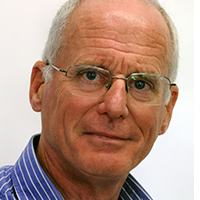
Bernard Willis qualified as MBChB at Leeds University in 1967. After completing his hospital residencies in surgery, general medicine and obstetrics, he left England to work as a private GP in Perth, Western Australia, where he obtained the Diploma in Obstetrics and Gynaecology and Membership of the Royal College of General Practitioners. After three years in Perth he returned to the UK and became a partner in a general practice in Essex. In 1982 he was recruited to become the senior GP at the first private primary care centre in England. In 1991 he and his wife went to Spain, where they spent nineteen years taking care of British and European ex-patriates.
While in Spain Dr Willis became ill with Chronic Fatigue Syndrome (CFS) brought on by a viral infection. This forced him to take time off work, an absence during which he researched and cured himself of the condition through natural lifestyle changes, nutrition, hormones and supplements. This led to the realisation that he could often treat his patients with nutritional therapies, thus avoiding pharmaceutical drugs and their inevitable side effects. He attended many courses on Integrative Medicine and holistic approaches, practising these widely in his clinics in Spain. Subsequently, he ran a busy Integrative Medicine clinic in Auckland, New Zealand for five years and was an active member of the Australasia Integrative Medicine Association (AIMA) and the Australasian College of Nutritional and Environmental Medicine (ACNEM). From early 2016 he will be practising in the UK. His interests currently include nutrition and dietary therapy, herbal treatments, bio-identical HRT and intravenous nutritional therapy for chronic diseases such as CFS, adrenal fatigue, thyroid disorders, male and female menopause and cancer.
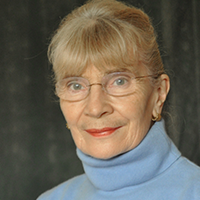
After graduating in chemistry from Imperial College, London, and gaining a further degree from Otago University, New Zealand, Xandria studied naturopathy and botanic medicine in Sydney, Australia. She went on to train in psychotherapy, NLP, EFT and related techniques. She is a member of the Royal Society of Medicine and has worked as a nutritional biochemist and naturopath in private practice for more than thirty years in Australia, the UK and Ireland. She has published more than 400 articles and twenty-one books, has been the head of nutrition departments in several colleges and given many thousands of hours of lectures and seminars in many countries to graduates, post-graduates and general interest groups. During the last ten years or so, she has developed a particular interest in researching cancer as a process, focusing on its early detection and the ways in which nutritional, plant-derived and other natural substances can be used to help restore homoeostasis, cellular chemistry and health. She is a founder member of the British Society for Integrative Oncology.
Vital Signs for Cancer, Xandria Williams, 2010, Piatkus, ISBN-10: 0749952474 ISBN-13: 978-0749952471 How to monitor, prevent and reverse the cancer process
Cancer Concerns, Xandria Williams, 2011, Xtra Health Publications, ISBN-10: 0956855202 ISBN-13: 978-0956855206 A practical 10-step path towards recovery described and explained
Detecting Cancer, Xandria Williams, 2013, Xtra Health Publications, ISBN-10: 0956855237 Book 3 of Xandria William’s planned Cancer Quintet
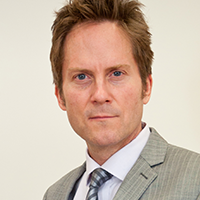
Dr Verkerk is an expert in agricultural, environmental and health sustainability. His MSc and PhD are both from Imperial College, London, awarded before his continuing research for a further seven years at the college’s Department of Biology, as a post-doctoral Research Fellow. In 2002 he founded the Alliance for Natural Health International (ANG-Intl), which has become one of the leading non-profit campaign organisations working globally to promote more sustainable healthcare systems through the use of natural and bio-compatible approaches. He is Executive and Scientific Director of the ANH-Intl as well as Co-chair of its Scientific and Medical Collaboration. Around sixty papers by him have been published in scientific journals and conference proceedings, and he contributes regularly to magazines and other popular media. He is also an accomplished and inspirational speaker and communicator on a wide range of issues relating to sustainability.
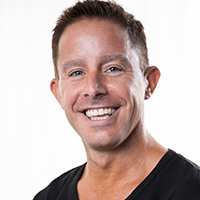
Known as the ‘Juice Master’, Jason Vale has sold over two million books worldwide and is highly regarded as one of the most influential people in the realm of juicing and health. Jason is the author of ten books. Besides appearing in many television and radio shows he has produced DVDs and CDs on juicing, health, fitness and junk-food addiction and is regularly featured in leading magazines.
Jason Vale’s 5:2 Juice Diet, Jason Vale, 2015, Juice Master Publications, ISBN-10: 0954766466 ISBN-13: 978-0954766467 Jason Vale’s most recent book – a ‘juicing’ take on the popular 5:2 diet
7lbs in 7 Days, Jason Vale, 2014, Harper Thorsons, ISBN-10: 0007436181 ISBN-13: 978-0007436187 The Juice Master diet
Juice Yourself Slim, Jason Vale, 2014, Harper Thorsons, ISBN-10: 0007267142 ISBN-13: 978-0007267149 The healthy way to lose weight without dieting
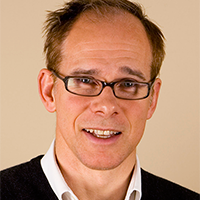
A Consultant Oncologist at Bedford and Addenbrooke’s Hospitals, Robert Thomas is also a Professor at Cranfield University and clinical teacher at Cambridge University. He treats breast, prostate and bowel cancer with chemotherapy, radiotherapy and brachytherapy as well as biological and supportive therapies; he is also a strong advocate of the role of self-help and lifestyle strategies to improve wellbeing and outcome. His book Lifestyle and Cancer: The Facts appeared in 2008 and he is editor of a website about cancer treatment and lifestyle. He has published over 100 scientific papers, including the world’s largest prospective trial evaluating lifestyle and prostate-cancer progression. He is chief investigator of the first double-blind randomised controlled trial of a polyphenol supplement (Pomi-T) in men with prostate cancer. Having designed the UK’s first level 4 cancer rehabilitation course for exercise professionals, he is also Media Spokesman and Chair of the Macmillan Cancer Support Exercise Advisory Group. In 2001 he was voted ‘Doctor of the Year’ by Hospital Doctor Magazine and in 2007 ‘Oncologist of the Year’ by the British Oncology Association.
Lifestyle and Cancer: The Facts, Prof. Robert Thomas, 2011, Health Education Publications, ASIN: B004L2LJ30 The second and updated edition from Britain’s leading oncologist in the field of lifestyle, nutrition and cancer
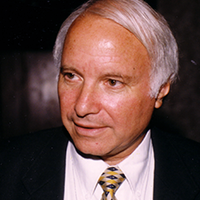
As Medical and Scientific Director of the CTCI, Prof. Shimon Slavin is internationally renowned for his innovative use of cell therapy and immunotherapy in treating cancer and life-threatening non-malignant diseases. Having graduated from the Hadassah Hebrew University School of Medicine in Jerusalem, Israel, Prof. Slavin went on to train in immunology and rheumatology at Stanford University in California and at the Fred Hutchinson Bone Marrow Transplantation Center in Seattle, Washington. His pioneering work in cell therapy of cancer by donor lymphocyte infusions (DLI), post allogeneic stem- cell transplantation and non-myeloablative stem cell transplantation (NST), or mini-transplant, is now in worldwide use. NST is much safer, less difficult for the patient and more economical than previously developed procedures.
Prof. Slavin has also developed personalised approaches to treat cancer using immunotherapy, mediated by innovative targeted cell therapy and vaccines. He conducts basic clinical research and clinical trials of novel methods to make his patients’ immune systems effective in targeting and combating their disease. The world’s leading peer-reviewed journals have published over 500 articles of his research. He has written four books on his medical research and innovations.
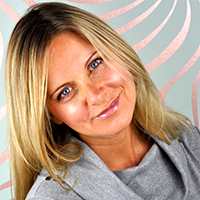
Shazzie has been a vegan since 1986 and a raw foodist since 2000. She is a TV presenter and author of five books. For well over a decade, she has given lectures and workshops around the world at the most prestigious venues, including the Burj Al Arab in Dubai. She is often featured in international media discussing such topics as raw food, superfoods, detox, raw chocolate, breastfeeding and natural parenting.
Shazzie’s Detox Delights, Shazzie, 2006, Rawcreation Limited, ASIN: B002MYB9HU Raw-food starter guide
Detox Your World, David Wolfe, Shazzie, 2012, North Atlantic Books, U.S. ISBN-10: 1583944508 ISBN-13: 978-1583944509 Quick and lasting results for a beautiful mind, body and spirit
Naked Chocolate, David Wolfe, Shazzie, 2012, North Atlantic Books, U.S. ISBN-10: 1556437315 ISBN-13: 978-1556437311 The astonishing truth about the world’s greatest food
Evie’s Kitchen, Shazzie, David Smith, 2008, Rawcreation Limited, ISBN-10: 0954397738 ISBN-13: 978-0954397739 Raising an ecstatic child
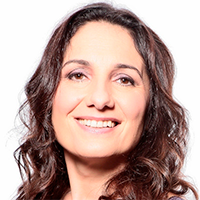
Patrizia’s healing work began when she was at a very low point in her life. Financial hardship, a severely prolapsed disc, panic attacks and agrophobia eventually forced her to look deeper into the connection between negative life experiences and emotions that were the underlying causes of these difficulties. Hesitant and resistant at first, she embarked on a journey of self-discovery and healing in an effort to recover her wellbeing. Inspired by the positive results she experienced, she decided to train so that se could offer equally powerful possibilities to others. She aims to support her clients’ desire to look deep within to clear old suppressed cell memories, allowing their self-healing potential to be fully activated.
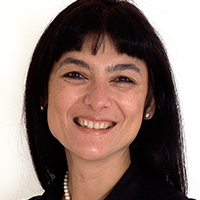
A traditional Chinese Medicine Doctor, Margella Salmins studied at Middlesex University and at Beijing University of Traditional Chinese Medicine. The five-year training included acupuncture, herbal medicine and associated therapies as well as Western medical diagnostic and clinical skills. She also holds certificates in Therapeutic Healing, Advanced Reiki and Macrobiotic Healing.
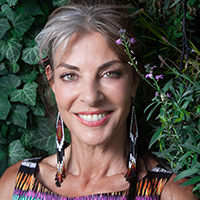
Jessica Richards qualified in clinical hypnosis in 1985. As well as training doctors, surgeons, midwives, dentists and anaesthetists for pain control and allied skills, she specialises in personal development and leads Chief Executive workshops and retreats, facilitating rapid change by identifying and resolving self-limiting beliefs, using her highly effective ‘Groundhog Day’ process (different place, different people but the same situation again). Jessica is a patron of the charity Cancer Active and the author of The Topic of Cancer, an inspired and practical guide that will help you take control when faced with cancer. Jessica has recovered from breast cancer through an intensive programme of Integrative Medicine.
The Topic of Cancer, Jessica Richards, 2011, Jessica Richards, ISBN-10: 0957064403 ISBN-13: 978-0957064409 Straightforward, practical advice on navigating through cancer treatment
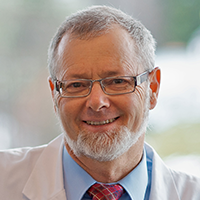
Thomas Rau studied medicine at the University of Berne, the leading medical school in Switzerland, and began his career in rheumatology and internal medicine. In 1981 he became the Medical Director of a rehabilitation clinic in Switzerland, where he treated patients with various degenerative disorders. During that time, Dr Rau first began to notice, as he put it: ‘With classical medicine, my patients weren’t getting better.’ He became interested in alternative therapies, particularly homeopathy and dietary changes, used by those patients whose health was improving. He found his own patients began to show remarkable progress when he treated them more holistically.
Dr Rau became a lifelong student of alternative medical methods, including Chinese and Ayurvedic medicine, as well as of the great holistic practitioners of the Swiss and German traditions. He studied with the leading European practitioners of his age and gradually formed his own method of restoring health to his patients. In doing so he developed theories about detoxification, nutrition, digestion and building up the immune function, resulting in an approach that he calls Biological Medicine.
In 1992 Dr Rau became the Medical Director of the Paracelsus Klinik in Lustmühle. Already recognised as a centre of holistic medicine, Paracelsus has since become one of the premier clinics for Biological Medicine in the world. Dr Rau has continued in his post there, alongside his writing – books, journal articles and conference papers – lectures and teaching.
Swiss Secret to Optimal Health, Dr Thomas Rau, Susan Wyler, 2009, Berkley Trade, ISBN-10: 0425225666 ISBN-13: 978-0425225660 Dr Rau’s diet for whole body healing
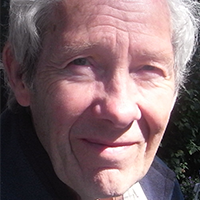
David is one of the few practitioners in the UK to be qualified in both naturopathy and herbal medicine. He began his studies in 1969 and in 1975 graduated as a medical herbalist. In 1981 he received a Diploma in Naturopathy from the British College of Naturopathy and Osteopathy, London (later renamed the British College of Osteopathic Medicine).
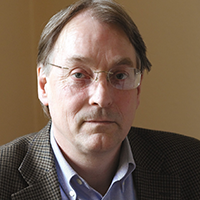
Dr Orange trained as a GP and in anthroposophic medicine in Holland. He was Medical Director of Park Attwood Clinic, Worcestershire, a centre for integrative anthroposophic medical-therapeutic care (now closed), where spiritual, psychosocial and biological aspects were taken into account in treatment. Dr Orange’s work has focused on integrative cancer care and he lectures and publishes regularly. His focus of interest and experience include: cancer care; immunology; mistletoe therapy; whole body hyperthermia; and spirituality in medical care. He currently holds a senior position in developing Integrative Oncology at the Ita Wegman Clinic, Arlesheim, Switzerland.
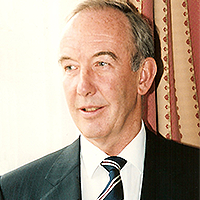
Dr Moran is the Medical Director of the privately run Holistic Medical Clinic, now based in Wimpole Street, London. He qualified in medicine from St George’s Hospital and in dentistry from Guy’s Dental Hospital, London. He is a Diplomate of the faculty of Family Planning and Reproductive Health Care of the Royal College of Obstetricians an Gynaecologists (RCOG) and holds post-graduate diplomas in psychosexual counselling, menopause and sexual dysfunction as well as an MSc in nutritional medicine. Dr Moran has been extensively trained by Prof. Ben Pfeifer at the Aeskulap Clinic in Switzerland and is therefore able to treat and advise on prostate and breast cancer following Pfeifer’s protocol.
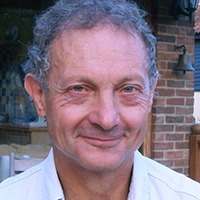
Dr Mannings qualified at the Queen’s University, Belfast, in 1976. He started his career as a GP. While continuing family practice, part-time, he worked in hospital medicine as a registrar in general and emergency services. In 1996 he became a specialist doctor in oncology at the Norfolk and Norwich Hospital but left after a year due to the lack of integrative care and the ineffectiveness and side effects of many of the chemotherapy regimes. He returned to part-time family practice and graduated from Nottingham University with an MSc in Cancer Immunotherapy. He also became an Honorary Senior Lecturer in Medicine at the University of East Anglia, tutoring medical students, as well as returning to the James Paget Hospital in Gorleston to work in oncology.
In 2009 Dr Mannings founded the cancer charity Star Throwers in Norfolk, which offers integrative care as well as immunotherapy and metabolic therapy. He is aiming to publish scientific studies on cancer-related topics, including outcomes.
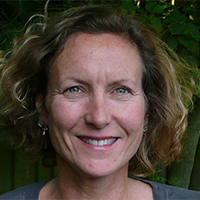
A mindfulness teacher based in Oxfordshire, Clare McLusky first started practising meditation around 2005, following treatment for throat cancer. Having noticed the profound effect this had on her health and wellbeing, she was motivated to share this approach with others. In 2012 she graduated from Oxford University with an MSc in Mindfulness-based Cognitive Therapy. She is an occupational therapist with extensive experience in mental health and group work.She began working for Yes to Life as a helpline volunteer in 2009 and believes wholeheartedly in the philosophy of the charity.

As a chef, nutritionist and writer, with her company Greencuisine Ltd, formed in 1995, Daphne has developed a series of nutrition-based programmes and retreats. She also runs a private consultancy practice to cater for individuals and organisations. In 2010 she founded Greencuisine Trust, an educational charity focused on ‘re-thinking’ food. Daphne has journeyed with those who have decided to follow the Gerson Therapy, assisting them in the preparation of food. She has also spent time at the Hippocrates Institute in Florida studying nutritional ways of healing. The author of two books, she provided the column on organic gardening for Healthy Eating for three years and regularly contributes to various other magazines. She was a trustee of the Soil Association for ten years.
Living Food: A Feast for Soil and Soul, Daphne Lambert, 2016, United Authors, Due for completion Spring 2016. A book that brings alive the connections between food, our health and the health of the planet
The Organic Baby & Toddler Cookbook, Daphne Lambert, Tanyia Maxted-Frost, 1990, Green Books, ISBN-10: 1870098862 ISBN-13: 978-1870098861 Specialised advice for parents concerned about the giving babies and toddlers the best possible nutrition
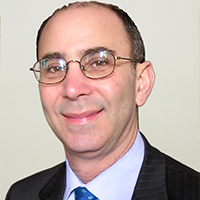
Qualified as a naturopath and homeopath, Robert Jacobs now has over thirty years of experience in natural medicine. He is the driving force behind the Health Natural Ltd clinic in London and the Society for Human Development in Los Angeles. A member of the General Council and Register of Naturopaths and the Homeopathic Medical Association in the UK, he is also a member of the American Naturopathic Medical Association. He specialises in Functional and Nutritional Medicine, promoting optimum function in the cells and systems of the body. These range from immune, digestive, detoxification, energy creation and hormone-balance systems to those involving brain, cardiovascular and anti-ageing functions. He works from the principle that imbalances in the body’s functional systems create symptoms and illness.
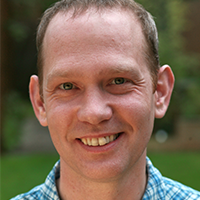
Tom qualified as a reflexologist in 1999 and set up his private practice in a North London clinic, where he offers reflexology, holistic massage, Thai massage and Reiki. Alongside this he has also run monthly clinics in companies, including Selfridge & Co and Reader’s Digest magazine. From 2007 until 2013 he worked at University College Hospital within the Complementary Therapy Team, on the cancer wards for adults, teenagers and young children. Tom is a member of the Federation of Holistic Therapists and also a full member of the Association of Reflexologists.
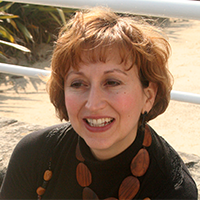
Juliet Hayward originally worked as a nutritionist at the Nutri Centre in London, where she set up a helpline. She now works in private practice, supporting cancer patients and people suffering from other challenging illnesses. Since 2010 she has been involved in consultancy work and lecturing for the Really Healthy Company and is now also part of the Academy of Nutritional Medicine in London.
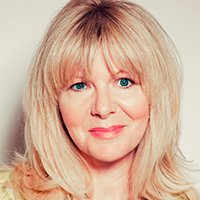
Renowned as an expert on natural health and wellbeing, Janey Lee Grace has written five best selling books on holistic living. She trained as a vocalist and appears regularly as a popular presenter on BBC Radio 2. In 2005 she founded Imperfectlynatural.com, a consumer website with a thriving forum.
Imperfectly Natural Baby and Toddler, Janey Lee Grace, 2007, Orion ISBN-10: 0752885898 ISBN-13: 978-0752885896 How to be a green parent in today’s busy world
Imperfectly Natural Home, Janey Lee Grace, 2008, Orion, ISBN-10: 0752885820 ISBN-13: 978-0752885827 Everything you need to know to create a healthy, natural home, in a very readable format
Imperfectly Natural Woman, Janey Lee Grace, 2005, Crown House Publishing, ISBN-10: 1904424899 ISBN-13: 978-1904424895 Getting life right the natural way
Look Good Naturally… Without Ditching the Lipstick, Janey Lee Grace, 2013, Hay House UK, ISBN-10: 1848502036 ISBN-13: 978-1848502031 Find your way through the minefield of toxic cosmetics
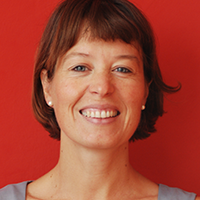
Barbara specialises in yoga for people with physical disabilities and limited mobility and has been working with physiotherapists and carers to provide support to those who are chair-bound or bed-ridden. Barbara began practising yoga in 1995 and obtained a British School of Yoga Diploma in 2005. On attending the Sivananda Yoga Vedanta Dhanwantari Ashram in Kerala, India (2008) she deepened her practice. In 2013 she completed the Yoga for Survivors programme for all types of cancer and all phases of survivorship. Barbara teaches at the London-based Life Centre, which has branches in Islington and Notting Hill, and also runs private and group yoga classes.
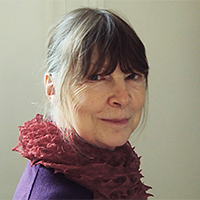
Jane Fior was a founder member of the Cancer Counselling Trust, which has sadly been forced to close due to lack of funds. She remains active
as a UKAHPP Accredited Psychotherapeutic Counsellor, UKCP registered with over twenty years’ experience in working with cancer issues at all stages of the disease. Based in North London, she has a particular interest in supporting people who choose to supplement their treatment with complementary approaches.
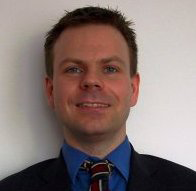
Dr Etheridge trained first at Imperial College, London, and in 1995-9 at the Department of Biochemistry and Molecular Genetics at St Mary’s Hospital in Paddington, London. The Department of Chemistry, Imperial College has granted him three patents in Gene Therapy. in 2006 Chris qualified as an accredited Practitioner of Herbal Medicine at the College of Phytotherapy in Epping, Essex.
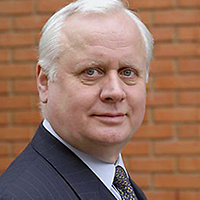
Trained as a banker, George Emsden is Principal at CancerIFA, a London- based financial advisory service to other financial advisers, employee benefit providers and to individuals. In his own words: ‘I talk to people about money. After twenty years in financial services, it seems that my real work found me’. His particular expertise comes from having had throat cancer himself in 2007, cured by six weeks of radiotherapy, leaving him with a different outlook on life. He now offers advice to anyone whose life is affected by cancer, whether as patient or as bereaved family member.
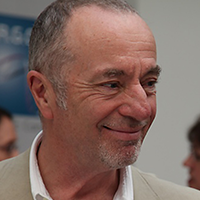
Qualifying from Guy’s Hospital, London in 1972, Dr Downing has worked in nutritional and environmental medicine since 1980. He is President of the British Society for Ecological Medicine, a founder member of the British Society for Integrative Oncology and was for twenty years the editor of the Journal of Nutritional and Environmental Medicine. His book Daylight Robbery (1988) was one of the first to highlight the importance of sunlight and vitamin D in healthcare.
Dr Downing practises Ecological Medicine. He explains that this embraces environmental effects on the individual through allergy, toxicology and nutrition, how the biochemical individuality (particularly genomics) of each of us affects our handling of these factors, and how each of us – patient, practitioner and individual – in turn has an impact on and a responsibility for our shared environment.
Daylight Robbery, Dr Damien Downing, 1988, Arrow Books, ISBN 0099567407 One of the first books to highlight to problems around vitamin D deficiency
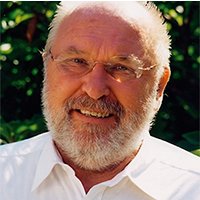
Born in Germany, Friedrich Douwes studied at the University of Marburg, receiving his MD in 1962. He then went to the USA and completed an Internship with Philadelphia General Hospital in 1967 and a Fellowship in Haematology and Oncology with Philadelphia’s Hahnemann University Hospital in 1970.
Dr Douwes returned to Germany and for almost ten years was on the staff at the University Hospital of Göttingen Medical Department as the Senior Physician in the Oncology Department. He published several articles pertaining to biological and immunological problems of tumours. Not satisfied with the clinical results attained as an orthodox oncologist, he began to integrate alternative methods into his daily work. He founded the first self-help group and the first Psych-Oncological Department in 1980 when he became Medical Director at the Sonnenburg Hospital in Bad Sooden-Allendorf, one of the largest cancer hospitals in Germany.
Between 1981 and 1987 Dr Douwes was involved in developing his integrative cancer concept, a synthesis of conventional and complementary therapies, and in 1991 he started his own cancer hospital, the Klinik St Georg in Bad Aibling, a health resort in Bavaria.
This clinic, with sixteen physicians on its staff, treats around five thousand cancer patients a year. They come from all over the world, and many have had remarkably successful results from the integrative approach to treating all types of cancer, even at an advanced stage.
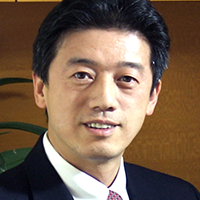
Dr Deng is an Associate Member and Attending Physician at Memorial Sloan-Kettering Cancer Center in New York. His clinical expertise is in cancer supportive care and Integrative Medicine. His clinical practice is one of the few in the USA to be designated a comprehensive cancer centre by the National Cancer Institute (NCI). It focuses on an evidence-based approach to Integrative Medicine and its applications in oncology. Dr Deng has taken a leadership role in this emerging and evolving field. He heads the clinical programmes and the physician education programmes at the Integrative Medicine Service at Sloan-Kettering and in 2011 served as President of the Society for Integrative Oncology. He is a principal investigator of research projects on acupuncture and botanical agents funded by the National Institutes of Health (NIH). Having written review articles, medical textbook chapters and practice guidelines on Integrative Medicine, he is frequently invited to give lectures around the world. He has peer-review responsibilities for professional journals and for NIH grant applications.
Dr Deng received his MD from Beijing Medical University, China, and his PhD in microbiology and from the University of Miami, Florida. He completed his clinical training at the University of Texas Medical School at Houston and research training at the University of Texas M.D. Anderson Cancer Center.
He is a member of the Research Council and the Institutional Review Board at Memorial Sloan-Kettering Cancer Center, and an Executive Board member of the Society for Integrative Oncology. In 2012 Dr Deng was the keynote speaker at the inaugural conference of the British Society for Integrative Oncology (BSIO).
PDQ Integrative Oncology, Barrie Cassileth PhD, Gary Deng MD PhD, Andrew Vickers PhD, K. Simon Yeung RPh Lac, 2005, BC Decker, ISBN-10: 1550092804 ISBN-13: 978-1550092806 Complementary therapies in cancer care
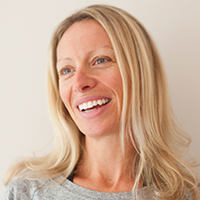
Lizzy Davis’ background is in oncology and palliative care nursing. Her mother’s gradual debilitation throughout treatment for lung cancer highlighted the very real and definite need for exercise to be an integral intervention throughout the cancer care pathway. She became an Advanced Personal Trainer and in 2012 successfully completed the first UK REPs (Register of Exercise Professionals) Level 4 accredited course in Cancer Exercise Rehabilitation.
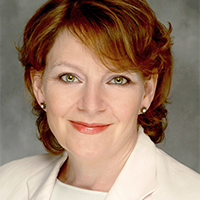
Dr Daniel is Founder and Medical Director of Health Creation, and she also works as an Integrative Medicine Consultant at the Apthorp Centre in Bath. She provides consultations for those with cancer who are seeking advice on how to integrate alternative, complementary and self-help approaches to fighting and healing cancer alongside orthodox medical treatment. Having been Medical Director of Bristol Cancer Help Centre (1993-9), she went on to work at the Harley Street Oncology Centre in London (1995-2005). She addresses conferences and seminars nationally and internationally, and is a regular broadcaster. She has written five books, including The Cancer Directory, and created the interactive Cancer Lifeline Kit; she also leads the supportive health-coaching programme of Health Creation mentors.
The Cancer Directory, Dr Rosy Daniel, 2005, Harper Thorsons, ISBN-10: 0007154275 ISBN-13: 978-0007154272 Comprehensive UK directory of integrative approaches to cancer
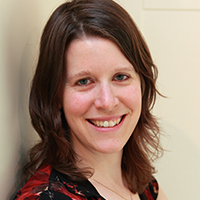
Patricia Daly is a fully qualified nutritional therapist based in Dublin, Ireland. Following her cancer diagnosis, she started studying nutrition and specialising in the area of integrative cancer care. She has taken a particular interest in the ketogenic diet and has written two books on this subject. As a native Swiss, she regularly attends training courses in Switzerland and Germany, for instance at the renowned Tumour Biology Centre in Freiburg. She is also a member of the British Society for Integrative Oncology. While her clinic is based in Dublin, she does phone/Skype consultations for clients who live elsewhere.
Practical 12-Gram Keto Meal Plans for Cancer Patients, Patricia Daly, patriciadaly.com, ‘Hands-on’ advice from nutritionist and cancer patient, Patricia Daly
Practical Keto Meal Plans for Cancer, Patricia Daly, patriciadaly.com,‘Hands-on’ advice from nutritionist and cancer patient, Patricia Daly
The Cancer Revolution – Ketogenic Diet – Patricia Daly from office@yestolife.org.uk on Vimeo.
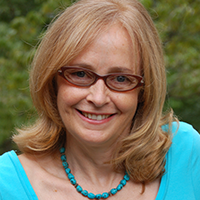
Jo Daly has been practising as a homeopath since the 1980s. Having lived, trained and worked in the UK, in 1989 she moved to the USA. She has been a founder and developer of two schools of homeopathy, first in California and later in New York as Dean of Education at the School of Homeopathy. Besides teaching elsewhere in the USA, UK and Japan, she also writes, supervises students, runs on-going study groups and is currently on the faculty at the Berkeley Institute of Homeopathy. Jo is a member of WISH (the World Institute for Sensation Homeopathy), which integrates practices based on those of Dr Rajan Sankaran.
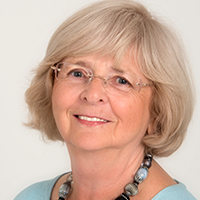
Dorothy Crowther is Chief Executive of Wirral Holistic Care Services, which she founded in 1988 and has been the driving force behind that organisation’s many developments and achievements ever since. Her degree in science and qualifications in nursing have led her to work in the field of therapeutic cancer care for most of her professional life. While studying in the USA, she also trained in Gerson Therapy at the Gerson Institute in San Diego, California.
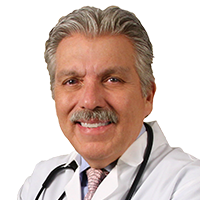
Dr Contreras is Director, President and Chairman of the Oasis of Hope Hospital, Playas de Tijuana, Mexico. A distinguished oncologist and surgeon, he is renowned for integrating conventional and alternative cancer treatments with emotional healing and spiritual care to provide patients with outcomes superior to those of conventional methods alone.
After graduating from medical school at the Autonomous University of Mexico, Dr Contreras specialised in surgical oncology at the University of Vienna in Austria, where he graduated with honours. He is the author or co-author of more than fifteen books concerning integrative therapy including 50 Critical Cancer Answers, Beating Cancer, Hope, Medicine & Healing, and The Hope of Living Cancer Free.
50 Critical Cancer Answers, Francisco Contreras MD, 2013, Authentic Publishers, ISBN-10: 1780781075 ISBN-13: 978-1780781075 50 tangible tips, plans, and prescriptive measures for tackling cancer and finding renewed health. Dr Contreras’ most recent book
Beating Cancer, Francisco Contreras MD, 2011, Siloam, ISBN-10: 1616381566 ISBN-13: 978-1616381561 20 natural, spiritual and medical remedies that can slow – and even reverse – cancer’s progression
Hope, Medicine & Healing, Francisco Contreras MD, 2009, Oasis of Hope Press, ISBN-10: 1579460011 ISBN-13: 978-1579460013 How patients can live with cancer, managing it like a chronic disease
The Hope of Living Cancer Free, Francisco Contreras MD 1999 Creation House ISBN-10: 0884196550 ISBN-13: 978-0884196556 Cancer is approached from the view of one’s emotional and spiritual factors in dealing with it
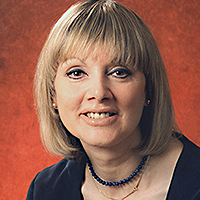
News Mar 2016: We are very sorry to hear of Jane’s death on 4th March, just prior to publication of The Cancer Revolution. Her substantial legacy of work will continue to be a support to many people with cancer.
One of the world’s leading geochemists, Prof. Jane Plant was chief scientist of the British Geological Survey (BGS) from 2000 to 2005, when she became Professor of Geochemistry at Imperial College, London. Having graduated with a Class I Honours degree in geology (special geochemistry) at Liverpool University in 1967, she gained her PhD in geochemistry at Leicester University ten years later. At the BGS she developed the methods for Britain’s national geochemical database, with its direct applications in mineral exploration – and most significantly (and at first unexpectedly) in the new field of environmental health: during the 1970s it was her team that helped to identify links between deficiency diseases in livestock and the geochemistry of the land on which they lived. Her personal experiences with breast cancer, and the findings of her research in this field, led her to become an author on the subject. She has published five books on dietary and environmental factors in cancer.
Beat Cancer: How to Regain Control of Your Health and Your Life, Prof. Jane Plant, Mustafa Djamgoz, 2014, Ebury Digital ISBN-10: 0091947952 ISBN-13: 978-0091947958 Prof. Plant’s most recent book, written with Prof. Djamgoz, aimed at empowering anyone with cancer
Prostate Cancer, Prof. Jane Plant, 2007, Virgin Books, ISBN-10: 075351298X ISBN-13: 978-0753512982 Understand, prevent and overcome prostate cancer
The Plant Programme, Prof. Jane Plant, 2001, Virgin Books, ISBN-10: 0753509520 ISBN-13: 978-0753509524 Recipes for fighting breast and prostate cancer
Your Life in Your Hands, Prof. Jane Plant, 2000, Virgin Books, ISBN-10: 0753512041 ISBN-13: 978-0753512043 The classic from Prof. Plant detailing her findings regarding dairy produce and more
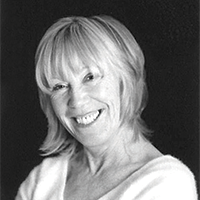
An award-winning food and cookery writer, Lynda has a lifelong interest in nutrition, organic food and farming as well as kitchen gardening. She is the author of eight major books, including The Cook’s Garden and the landmark Shopper’s Guide to Organic Food and Farming, and Organic Living. Lynda has been actively Involved with the organic movement since the mid-1990s; she writes regularly for the Soil Association, contributes the ‘Food in Depth’ column to Living Earth, and is currently working on her next book.
The Cook’s Garden, Lynda Brown, 1992, Vermilion, ISBN-10: 0091775868 ISBN-13: 978-0091775865 ‘Grow your own’ guidance
The New Shopper’s Guide to Organic Food, Lynda Brown, 2002, Fourth Estate, ISBN-10: 1841154253 ISBN-13: 978-1841154251 ‘Essential reading for anyone who cares about what they put in their and their children’s mouths.’ Nigel Slater, Observer
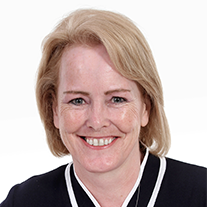
Patricia Peat spent many years as a nurse working in NHS oncology wards, supporting people through standard treatments – surgery, chemotherapy and radiotherapy. She always set great store by the ‘therapeutic relationship’ between patient and caregiver, but, in common with other staff, had little interest in Complementary and Alternative Medicine (CAM). That was until she began to notice that many of those integrating a range of other therapies into their regime were actually managing rather better than expected. She simultaneously became aware of their intense frustration at finding their doctors not only unable and unwilling to engage in constructive dialogue about their options, but unsupportive of their choices.
Inspired by these pioneering endeavours, Patricia set up Cancer Options in 1998 to support people with cancer in taking charge of their situation, in exploring the widest possible range of treatment options and in building their own integrative treatment programme based around their personal choices. Passionate about encouraging the safe integration of complementary therapies with standard treatments, she has developed Cancer Options into a unique service at the forefront of integrative cancer care in the UK.
Patricia has added – and continues to add – to her experience and knowledge of standard cancer treatments through her extensive research into the evidence base for all CAM approaches in use, both in the UK and abroad. She has developed a deep understanding of the methods of many of the top integrative practitioners and clinics in the world. Additionally, she has made it her business to be right up to the minute with new techniques being pioneered within the NHS and other health services abroad.
Fifteen years of close work with all types of cancer have provided her with an unparallelled overview of what is helpful at each stage of each cancer. She still finds that the UK is lagging far behind some other countries in acceptance of integrative methods, but hopes that this book will play a part in moving things forward.
Patricia is a medical adviser to Yes to Life and the Integrated Healthcare Trust, also a patron of the charity CANCERactive. She is a respected public speaker and writer on the subject of Integrative Medicine and empowering people to make their own health decisions.
FOREWORD
Robin Daly, Chairman and Founder of the UK charity Yes to Life, shares the impetus that led to the founding of the charity, and sets the scene for the creation of The Cancer Revolution.
INTRODUCION
Patricia Peat introduces us to the concept of Integrative Medicine and the thinking and science behind it, and gives an overview of the development of integrative practice in the UK.
Dr Gary Deng, past President of the Society for Integrative Oncology in the US, and an Associate Member and Attending Physician of the Integrative Oncology Department at Memorial Sloan-Kettering Cancer Center in New York, gives us a picture of how Integrative Medicine is developing in the US – at this point, far ahead of the UK.
FOREWORD
1. Maddams J, Utley M, Møller H. (2012) Projections of cancer prevalence in the United Kingdom, 2010-2040. Br J Cancer.107: 1195-1202.
Forman D, Stockton D, Møller H, Quinn M, Babb P, De Angelis R, Micheli A. (2003) Cancer prevalence in the UK: results from the EUROPREVAL study. Ann Oncol. 14(4):648-654.
2. D M Parkin. (2010) Cancers attributable to inadequate physical exercise in the UK. Br J Cancer 105: S38-S41
D M Parkin, L Boyd, L C Walker. (2010) The fraction of cancer attributable to lifestyle and environmental factors in the UK. Br J Cancer 105: S77-S81;
3. Robert James Thomas, Mea Holm and Ali Al-Adhami. (2014) Physical activity after cancer: An evidence review of the international literature BJMP 7(1):a708
4. Wassertheil-Smoller S, McGinn AP, Budrys N, Chlebowski R, Ho GY, Johnson KC, Lane DS, Li W, Neuhouser ML, Saquib J, Shikany JM, Song Y, Thomson C. (2013) Multivitamin and mineral use and breast cancer mortality in older women with invasive breast cancer in the women’s health initiative. Breast Cancer Res Treat. 141(3):495-505.



PDQ Integrative Oncology, Barrie Cassileth PhD, Gary Deng MD PhD, Andrew Vickers PhD, K. Simon Yeung RPh Lac, 2005, BC Decker, ISBN-10: 1550092804 ISBN-13: 978-1550092806 Complementary therapies in cancer care
Patricia Peat – What is cancer?
British Society for Integrative Oncology (BSIO) The leading UK professional body for practitioners of Integrative Medicine for cancer
Memorial Sloan-Kettering Cancer Center The Integrative Oncology Department at MSKCC
Society for Integrative Oncology (SIO) The leading US professional body for practitioners of Integrative Medicine for cancer
This first chapter begins to explore the integrative model of cancer care, along with some of the practicalities of setting out on this path. We cover the current understanding of what cancer is, and how and why we get it. We look at the way that it develops and then at the many pathways through which Integrative Medicine can influence this.
The Therapeutic Target Icons that are employed throughout the book to highlight material that relates to achieving particular targets are explored in more detail, and we take a look at the science underpinning Integrative Medicine approaches.
Taking an integrative approach in the UK has its own special challenges, so we go into these as well as some sound strategies for finding our way through.
1. Ingber DE. (2008) Can cancer be reversed by engineering the tumor microenvironment? Semin Cancer Biol;18(5):356-364.
Kenny PA, Bissell MJ. (2003) Tumor reversion: correction of malignant behavior by microenvironmental cues. Int J Cancer. 107(5):688-695.
2. Ben-Arye E, Samuels N, Schiff E, Lavie O. (2016) Designing an integrative gynecologic oncology model of supportive care: call for a cross-cultural international collaboration. Support Care Cancer. [Epub ahead of print]
Schütze T, Längler A, Zuzak TJ, Schmidt P, Zernikow B. (2016) Use of complementary and alternative medicine by pediatric oncology patients during palliative care. Support Care Cancer. [Epub ahead of print]
3. Ooi V, Liu F. (1999) A Review of Pharmacological Activities of Mushroom Polysaccharides. Int. J. Medicinal Mushrooms, 1:195-206.
Park HY, Yu AR, Choi IW, Hong HD, Lee KW, Choi HD. (2013) Immunostimulatory effects and characterization of a glycoprotein fraction from rice bran. Int Immunopharmacol. 17(2):191-197.
4. Yang J, Staples O, Thomas LW, Briston T, Robson M, Poon E, Simões ML, El-Emir E, Buffa FM, Ahmed A, Annear NP, Shukla D, Pedley BR, Maxwell PH, Harris AL, Ashcroft M. (2012) Human CHCHD4 mitochondrial proteins regulate cellular oxygen consumption rate and metabolism and provide a critical role in hypoxia signaling and tumor progression. J Clin Invest. 122(2):600-611.
5. Alliance for Natural Health International (ANH-Intl), ANH Exclusive! Natural health products ultra-safe and drugs as dangerous as war. http://anhinternational.org/news/anh-exclusive-natural-health-products-ultra-safe-and-drugs-dangerous-war
6. Bronstein AC, Spyker DA, Cantilena LR Jr, Green JL, Rumack BH, Dart RC. (2011) Annual Report of the American Association of Poison Control Centers’ National Poison Data System (NPDS): 28th Annual Report. Clinical Toxicology. 49: 910–941.
7. George Watson. (1972) Nutrition and Your Mind —The Psychochemical Response.



Vision of Hope Clinic Integrative Medicine for people with cancer
Xandria Williams Biochemist, naturopath, author and teacher with a specialist interest in cancer
British Society for Integrative Oncology (BSIO) The leading UK professional body for practitioners of Integrative Medicine for cancer
Green Med Info Research data on integrative approaches
Medline Research data
NHS Health Records About your health records
Society for Integrative Oncology (SIO) The leading US professional body for practitioners of Integrative Medicine for cancer
Chapter 2 explores the crucial role of hormones in relation to cancer. People living what would be broadly describes as a ‘Western lifestyle’ are suffering an epidemic of hormone-driven cancers. The subject has been given a dedicated chapter to highlight the significance of this aspect of cancer. Drivers of hormone-related cancers are explored, along with strategies to mitigate them.
1. Nutritional Influences on Estrogen Metabolism. (2001) Applied Nutritional Science Reports: Advanced Nutrition Publications, Inc. Met. 451:1/01;
2. Le Marchand L, Franke AA, Custer L, Wilkens LR, Cooney RV. (1997) Lifestyle and Nutritional Correlates of Cytochrome CYP1A2 Activity: Inverse associations with Plasma Lutein and Alpha-Tocopherol. Pharmacognetics. 7(1):11-19.
3. Vieth R. (2001) Vitamin D nutrition and its potential health benefits for bone, cancer and other conditions. Journal of Nutritional & Environmental Medicine. 11:275-291.
4. Shu XO, Jin F, Dai Q, Wen W, Potter JD, Kushi LH, Ruan Z, Gao YT, Zheng W. (2001) Soyfood intake during adolescence and subsequent risk of breast cancer among Chinese women. Cancer Epidemiology, Biomakers & Prevalence. 10 (5): 483-488.
5. Adlercreutz H, Höckerstedt K, Bannwart C, Bloigu S, Hämäläinen E, Fotsis T, Ollus A. (1987). Effects of dietary components, including lignans and phytoestrogens on enterohepatic circulation and liver metabolism of oestrogen and SHBG. Journal of Steroid Biochemistry. 27 (4-6), pp. 1135-1144.
Pfeifer and Aeikens Positive Health. 2006; 120:19-25 (http://www.positivehealth.com/article/cancer/complementary-therapies-for-hormone-refractory-prostrate-cancer)
Pfeifer BL. (2006) Complementary Therapies for Hormone Refractory Prostrate Cancer. Positive Health / UK health magazine; 120


Hormone Solution, Dr Thierry Hertoghe, 2004, Random House USA Inc, ISBN-10: 1400080851
ISBN-13: 978-1400080854 Stay younger longer with natural hormone and nutrition therapies
Knockout, Suzanne Somers, 2010, Three Rivers Press, ISBN-10: 0307587592 ISBN-13: 978-0307587596 Interviews with doctors who are curing cancer – and how to avoid
getting it in the first place
Stay Young & Sexy with Bio-Identical Hormone Replacement, Jonathan V., M.D. Wright, Lane Lenard 2010 Smart Publications, ISBN-10: 1890572225 ISBN-13: 978-1890572228 The science of hormone replacement explained
The Hormone Cure, Sara Gottfried, 2014, Simon & Schuster, ISBN-10: 1451666950 ISBN-13: 978-1451666953 Reclaim balance, sleep, sex drive and vitality naturally with the Gottfried Protocol
Waking The Warrior Goddess, Christine Horner, 2013, Basic Health Publications, ISBN-10: 1591203635 ISBN-13: 978-1591203636 Dr. Christine Horner’s programme to protect against and fight breast cancer
Womancode, Alisa Vitti, 2014, HarperOne, ISBN-10: 006213079X ISBN-13: 978-0062130792 Perfect your cycle, amplify your fertility, supercharge your sex drive, and become a power source
Holistic Medical Clinic Integrative Medicine practice, specialising in hormones
Pfeifer Protocol in the UK Pfeifer prostate protocol: supervision in the UK
Pfeifer Protocols Information site for the Pfeifer breast and prostate protocols
Chapter 3 is virtually a directory of integrative therapies. After Integrative Doctor and Nutritionist, they are grouped together into Alternative Medical Systems, Physical Activity, Bodywork and Mind and Spirit Therapies. Each therapy is described – often by a practitioner experienced in supporting people with cancer – and examples are given of the reasons you might want to consider them as part of your overall strategy.
1. Brekhman II, Dardymov IV. (1969) New substances of plant origin which increase non-specific resistance. Annual Review of Pharmacology & Toxicology. 9:419-430.
Kupin VI, Polevaia EB. (1986) Stimulation of the immunological reactivity of cancer patients by Eleutherococcus extract. Voprosy onkologii. 32 (7):21-26.
Davydov M, Krikorian AD. (2000) Eleutherococcus senticosus (Rupr. & Maxim.) Maxim. (Araliaceae) as an adaptogen: a closer look. Journal of Ethnopharmacology. 72 (3):345–393.
Li TSC. (2001) Siberian Ginseng. Hort Technology.11:79-85.
Kormosh N, Laktionov K, Antoshechkina M. (2006) Effect of a combination of extract from several plants on cell-mediated and humoral immunity of patients with advanced ovarian cancer. Phytotherapy Research.20 (5): 424-425.
2. Fong DYT, Ho JWX, Hui BPH, Lee AM, Macfarlane DJ, Leung SSK, Cerin E, Chan WYY, Leung IPF, Lam SHS, Taylor AJ, Cheng K. (2012). Physical activity for cancer survivors: meta-analysis of randomised controlled trials. BMJ. 344:e70.
Adamsen L, Quist M, Anderson C, Møller T, Herrstedt J, Kronborg D, Baadsgaard MT, Vistisen K, Midtgaard J, Christiansen B, Stage M, Kronborg MT, Rørth M. (2009). Effect of a multimodal high intensity exercise intervention in cancer patients undergoing chemotherapy: randomised controlled trial BMJ.39:b3410.
3. Kenfield SA, Stampfer MJ, Giovannucci E, Chan JM. (2011). Physical activity and survival after prostate cancer diagnosis in the health professionals follow-up study. J Clin Oncol. 29(6):726-32.
4. Bower JE, Garet D, Sternlieb B, Ganz PA, Irwin MR, Olmstead R, Greendale G. (2012). Yoga for persistent fatigue in breast cancer survivors: a randomized controlled trial. Cancer.118(15):3766-3775.
Cramer H, Lange S, Klose P, Paul A, Dobos G.(2012). Yoga for breast cancer patients and survivors: a systematic review and meta-analysis. BMC Cancer.12:412.
Vadiraja SH, Rao MR, Nagendra RH, Nagarathna R, Rekha M, Vanitha N, Gopinath SK, Srinath B, Vishweshwara M, Madhavi Y, S Ajaikumar B, Ramesh SB, Rao N. (2009). Effects of yoga on symptom management in breast cancer patients: A randomized controlled trial. International Journal of Yoga. 2(2):73-79.
Culos-Reed SN, Carlson LE, Daroux LM, Hately-Aldous S. (2006). A pilot study of yoga for breast cancer survivors: physical and psychological benefits. Psychooncology.15(10):891-897.
Bower JE, Woolery A, Sternlieb B, Garet D. (2005). Yoga for cancer patients and survivors.
Cancer Control. 12(3):165-171.
Carson JW, Carson KM, Porter LS, Keefe FJ, Shaw H, Miller JM. (2007). Yoga for women with metastatic breast cancer: results from a pilot study. Journal of Pain and Symptom Management.33(3):331-341.
Cohen L, Warneke C, Fouladi RT, Rodriguez MA, Chaoul-Reich A. (2004). Psychological adjustment and sleep quality in a randomized trial of the effects of a Tibetan yoga intervention in patients with lymphoma. Cancer.100(10):2253-2260.
5. Zeng Y, Luo T, Xie H, Huang M, Cheng AS. (2014). Health benefits of qigong or tai chi for cancer patients: a systematic review and meta-analyses. Complement Ther Med;22(1):173-186.
6. Burgan B. (2013). Massage therapy. http://www.takingcharge.csh.umn.edu/explore-healing-practices/ massage-therapy
7. Földi E. (1998). The treatment of lymphedema. Cancer; 83(12 Suppl American):2833-2834.
8. Teagarden K. (2015). How does reflexology work? http://www.takingcharge.csh.umn.edu/explore-healing-practices/reflexology/how-does-reflexology-work
9. Motion Sickness Guru. How to relief and stop Motion Sickness with Acupressure, Wristbands & Bracelets. Retrieved 01/10/2015 from http://www.motion-sickness-guru.com/acupressure-wrist-bands-and-bracelets.html
10. Carlson LE, Speca M, Patel K, Goodey E. (2003) Mindfulness based stress reduction in relation to quality of life, mood, symptoms of stress, and immune parameters in breast and prostate cancer outpatients. Psychosomatic Medicine.65 (4):571-581.
Shennan C, Payne M, Fenlon D. (2011) What is the evidence for the use of mindfulness-based interventions in cancer care? A review. Psycho-oncology.20 (7):681-697.
11. Barlow F, Walker J, Lewith G. (2013). Effects of spiritual healing for women undergoing long-term hormone therapy for breast cancer: a qualitative investigation. J Altern Complement Med;19(3):211-216.
12. Walker LG, Ratcliffe MA, Dawson AA. (2000) Relaxation and hypnotherapy: Long term effects on the survival of patients with lymphoma. Psycho-oncologyl.9:355-356.
13. Walker LG, Walker MB, Ogstonn K, Heys SD, Ah-See AK, Miller ID, Hutcheon AW, Sarkar TK, Eremin O. (1999) Psychological, clinical and pathological effects of relaxation training and guided imagery during primary chemotherapy’. British Journal of Cancer. 80:262-268.
14. Bischof, M. (2005). Biophotons: The light in our cells. Journal of Optometric Phototherapy. http://www.international-light-association.eu/PDF/Biophotons.pdf
15. Reynolds P, Hurley S, Torres M, Jackson J, Boyd P, Chen VW. (2000) Use of coping strategies and breast cancer survival: results from the Black/White Cancer Survival Study. Am J Epidemiol. 15;152(10):940-949.
Kroenke CH, Kubzansky LD, Schernhammer ES, Holmes MD, Kawachi I. (2000) Social networks, social support, and survival after breast cancer diagnosis. J Clin Oncol. 24(7):1105-11.
Epplein M, Zheng Y, Zheng W, Chen Z, Gu K, Penson D, Lu W, Shu XO. (2011)Quality of life after breast cancer diagnosis and survival. J Clin Oncol. 29(4):406-412.
Kroenke CH, Quesenberry C, Kwan ML, Sweeney C, Castillo A, Caan BJ. (2013) Social networks, social support, and burden in relationships, and mortality after breast cancer diagnosis in the Life After Breast Cancer Epidemiology (LACE) Study. Breast Cancer Res Treat. 137(1):261-271.
Rosenbaum E, Gautier H, Fobair P, Neri E, Festa B, Hawn M, Andrews A, Hirshberger N, Selim S, Spiegel D. (2004). Cancer supportive care, improving the quality of life for cancer patients: a program evaluation report. Supportive Cancer Care.12(5):293-301.













Mindfulness for Health, Vidyamal Burch, Danny Penman, 2013, Piatkus, ISBN-10: 074995924X ISBN-13: 978-0749959241 A practical guide to relieving pain, reducing stress and restoring wellbeing
The Journey, Brandon Bays, 2012 Atria Books, ISBN-10: 145166561X ISBN-13: 978-1451665611 Inspiration account of the author’s recovery from cancer which formed the basis of a now popular therapy for cancer: The Journey
Patrizia Sergeant – Healing Meditation
Barbara Gallani Barbara Gallani’s teacher page on the Life Centre website
Cancer Options Consultancy providing personalised information on Integrative Medicine options
CanExercise Lizzy Davis’ site offering exercise resources and support for those with cancer
Center for Homeopathy Information and contacts for homeopathy in the USA
Chris Etheridge Herbalist specialising in supporting people with cancer
Jessica Richards Jessica Richards’ site for her work as personal transformation specialist and leadership mentor
LIFE> Yes to Life Web Directory Extensive searchable directory of therapies, practitioners and clinics worldwide
Margella Salmins Margella Salmins’ site for her work as a Traditional East Asian Medicine practitioner
Patrizia Sergeant Patrizia Sergeant’s site for her work as a Journey, Bowen and Reiki practitioner
Wirral Holistic Care Complementary therapies for people with cancer, established by Dorothy Crowther
Yes to Life The UK’s integrative cancer care charity
Academy of Nutritional Medicine UK forum for advancing nutritional medicine
Acupuncture Society The Acupuncture Society is an association and register of professional acupuncture therapists, formed to promote the development of TCM, Acupuncture, Chinese Herbal Medicine and other Oriental Therapies
Association for Nutrition Registered Nutritionists
Association of Reflexologists Professional UK association providing benefits, advice and guidance to reflexologists
Association of Traditional Chinese Medicine UK regulatory body engaged in academic study, research and the clinical application of Traditional Chinese Medicine
Ayurvedic Practitioners Association The APA represents qualified and insured Ayurvedic practitioners, Ayurvedic therapists and students of Ayurveda in the UK
British Acupuncture Council UK professional/self-regulatory body for the practice of traditional acupuncture
British Association of Accredited Ayurvedic Practitioners Professional Ayurvedic Association devoted to voluntary service in spreading awareness and the establishment of an authentic, effective, safe and undiluted system of Ayurveda
British Association of Art Therapists Find therapist, courses, conferences, training
British Association for Music Therapy Professional body for music therapy in the UK, providing both practitioners and non-practitioners with information, professional support and training opportunities
British Council for Yoga Therapy An excellent resource to find a herbalist in your area
British Health Qigong Association Official governing body and instructor training centre for Europe, the UK and Northern Ireland
British Homeopathic Association Information, education and research on homeopathy. Find a medical homeopath
British Naturopathic Association Professional body of practicing naturopaths who are registered with the General Council and Register of Naturopaths (GCRN) in the UK
British Society for Integrative Oncology (BSIO) The leading UK professional body for practitioners of Integrative Medicine for cancer
British Society of Clinical Hypnosis Promote and assures high standards in the practice of hypnotherapy
British Wheel of Yoga Sport England recognised national governing body for yoga
Be Mindful All about mindfulness. Find a teacher
Be Mindful Online Online mindfulness course
Biodynamic Association UK association of biodynamic growers
Biofeedback Find a practitioner
Cancer Counselling London Highly experienced professional cancer counselling
CANCERactive – Support Groups CANCERactive listing of UK support groups
College of Practitioners of Phytotherapy (CPP) Professional membership organisation of phytotherapists
Commonweal Centre Complementary therapies centre in California set up by Michael Lerner, who was inspired by the UK Bristol Cancer Help Centre (now Penny Brohn Cancer Care)
Complementary and Natural Healthcare Council (CNHC) UK voluntary register of complementary therapists. Find a practitioner
Emotional Freedom Technique (EFT) Find a practitioner
Federation of Holistic Therapists Largest professional association for therapists in the UK and Ireland
Federation of Nutritional Therapy Practitioners Professional organisation for practitioners of nutritional therapy in Europe
GCMT (Massage) Aims to represent the views of the whole spectrum of massage and soft tissue practitioners by working collectively in the best interests of the profession
General Hypnotherapy Register Find a hypnotherapist or a training course
General Naturopathic Council Regulates the Naturopathic profession
Gerson Institute Information on Gerson therapy, clinics, programmes
Guided Mindfulness Meditation Practices Official outlet for 3 series of guided mindfulness meditation practices by Jon Kabat-Zinn
Healing Trust UK organisation of Spiritual Healers
Health Creation Mentor Health Creation’s mentor scheme set up for people with cancer by Dr Rosy Daniel
Hypnotherapist Register Find a hypnotherapist
Hypnotherapy Association Professional UK body representing approved hypnotherapists in active practice
Hypnotherapy Directory Find a hypnotherapist
Independent Yoga Network Organisation for Yoga Teachers and Teacher Training Schools
International Federation of Professional Aromatherapists UK professional body representing aromatherapists
Journaling Description of Journaling as a support to those with cancer
Journaling/Treatment Diary Anonymous online sharing of health diaries
Life Centre Yoga courses, workshops, therapies and teacher training
Macmillan – Support Groups Directory of support groups
Mercola In depth description of EFT and EFT techniques
National Council for Hypnotherapy UK hypnotherapy professional association
National Institute of Medical Herbalists (NIMH) UK professional body representing herbal practitioners
Oxford Mindfulness Centre Resources and courses for the public
Register of Chinese Herbal Medicine Regulating the practice of Chinese Herbal Medicine (CHM) in the UK
Register of Exercise Professionals Provides regulation for instructors and trainers to ensure that they meet the health and fitness industry’s agreed National Occupational Standards
Reiki Council Wide range of resources for Reiki
Reiki Federation Find a course, practitioner, teacher
Shiatsu Society Promotes Shiatsu and ensures safe practice, training and professional conduct of all Shiatsu practitioners
Society of Homeopaths Professional body for homeopaths. Find a homeopath
T’ai Chi at Maggie’s Centres Find a Maggie’s Centre
The Journey Brandon Bays’ website for her Journey therapy: seminars, practitioners, books, recordings
Wright Foundation Provides specialist cancer rehabilitation exercise courses for professionals
Yoga for Survivors Yoga for Survivors: specialised yoga for people with cancer
Lynda Brown is a leading expert on food and food production and is author of successful books on this subject. In Chapter 4 she answers the deceptively simple question of how to buy good food. She picks apart all the labels – organic, biodynamic, free range, artisan – to explain exactly what each means and how they can guide your choices. She also looks at the question of where you buy your food and the merits of, say, farmers’ markets as apposed to the supermarket. Lastly she highlights the benefits of growing your own and makes some recommendations.
1. Djoussé L, Gaziano JM. (2009). Dietary cholesterol and coronary artery disease: a systematic review. Curr Atheroscler Rep. 11(6):418-422.

The Cook’s Garden, Lynda Brown, 1992, Vermilion ISBN-10: 0091775868 ISBN-13: 978-0091775865 ‘Grow your own’ guidance
The New Shopper’s Guide to Organic Food, Lynda Brown, 2002, Fourth Estate, ISBN-10: 1841154253 ISBN-13: 978-1841154251 ‘Essential reading for anyone who cares about what they put in their and their children’s mouths.’ Nigel Slater, Observer
In Defence of Food, Michael Pollan, 2009, Penguin, ISBN-10: 0141034726 ISBN-13: 978-0141034720 The myth of nutrition and the pleasures of eating: an eater’s manifesto
Eat Your Heart Out, Felicity Lawrence, 2008, Penguin, ISBN-10: 0141026014 ISBN-13: 978-0141026015 Why the food business is bad for the planet and your health
Molecules of Emotion, Candace B Pert, 1999, Pocket Books, ISBN-10: 0671033972 ISBN-13: 978-0671033972, Why you feel the way you feel. Groundbreaking book on the biology of emotion
Not on the Label, Felicity Lawrence, 2013, Penguin, ISBN-10: 0241967821 ISBN-13: 978-0241967829 What really goes into the food on your plate. Classic exposé of the supermarket industry updated with extraordinary new material on the horse meat scandal
What to Eat, Joanna Blythman, 2013, Fourth Estate, ISBN-10: 0007476469 ISBN-13: 978-0007476466 Food that’s good for your health, pocket and plate
Abel & Cole Organic food delivery
Big Barn Directory of local food producers selling directly to the public, including those selling online
Biodynamic Association Events, resources, training, certification, books, videos
Pesticide Action Network Campaigning group promoting safe and sustainable alternatives to hazardous pesticides
Raw Milk Information site specifically about raw milk
Riverford Organic farm and delivery
Soil Association Link to blog to read more by Lynda Brown
Weston Price Foundation Natural fats, raw milk, health and nutrition. Events, videos, resources
Daphne Lambert has had a lifetime of involvement with nutrition and cooking, much of it focused on cancer. In this important chapter, Daphne looks into many of the questions that arise around nutrition and cancer: Is it good to go vegetarian? Or even vegan? What are the benefits of a raw food diet? She highlights some great anti-cancer food choices and some choices to avoid altogether. She makes practical suggestions for dealing with eating problems and compares the pluses and minuses of various ways of cooking food.
In amongst Daphne’s material, Dr Xandria Williams warns of the dangers of glucose, Patricia Daly extols the virtues of the ketogenic diet – including sample keto recipes – Prof Jane Plant highlights the problem with dairy produce and Patricia Peat explains cachexia, or chronic weight loss, a condition that can be associated with some cancers.
1. Warburg O. (1966) The Prime Cause and Prevention of Cancer. Lecture to Nobel Laureates.
2. Warburg, O. (1956) On the origin of cancer cells. Science. 23:309-314
3. Demetrakopoulos GE, Brennan MF. (1982) Tumoricidal potential of nutritional manipulations. Cancer Research.42(Suppl.):756s.
4. Papa V, Pezzino V, Costantino A, Belfiore A, Giuffrida D, Frittitta L, Vannelli GB, Brand R, Goldfine ID, Vigneri R. (1990) Elevated insulin receptor content in human breast cancer. J Clin Invest. 86(5):1503-1510.
5. Lopez-Serra P, Marcilla M, Villanueva A, Ramos-Fernandez A, Palau A, Leal L, Wahi JE, Setien-Baranda F, Szczesna K, Moutinho C, Martinez-Cardus A, Heyn H, Sandoval J, Puertas S, Vidal A, Sanjuan X, Martinez-Balibrea E, Viñals F, Perales JC, Bramsem JB, Ørntoft TF, Andersen CL, Tabernero J, McDermott U, Boxer MB, Vander Heiden MG, Albar JP, Esteller M. (2014). A DERL3-associated defect in the degradation of SLC2A1 mediates the Warburg effect. Nature Communications. 5: 3608.
6. Wolf P. (2008) Innovations in biological cancer therapy, a guide for patients and their relatives. Hannover: Naturasanitas. 42–43. ISBN 978-3-9812416-1-7.
7. Hung MC. (2008). Unexpected role: EGFR protects cancer cells from starving. Public release:
http://www.eurekalert.org/pub_releases/2008-05/uotm-ure050208.php
Weihua Z, Tsan R, Huang WC, Wu Q, Chiu CH, Fidler IJ, Hung MC. (2008) Survival of cancer cells is maintained by EGFR independent of its kinase activity. Cancer Cell. 13(5):385-393.
8. Groesbeck DK, Bluml RM, Kossoff EH. (2006) Long-term use of the ketogenic diet in the treatment of epilepsy. Developmental Medicine & Child Neurology. 48:978-981.
9. Paoli A, Rubini A, Volek JS, Grimaldi KA. (2013) Beyond weight loss: a review of therapeutic uses of very-low-carbohydrate (ketogenic) diets. European Journal of Clinical Nutrition.67:789-796.
10. Ho VW , Leung K, Hsu A, Luk B , Lai J, Shen SY , Minchinton AI, Waterhouse D , Bally MB, Lin W, Nelson BH, Sly LM , Krystal G. (2011) A low carbohydrate, high protein diet slows tumor growth and prevents cancer initiation. Cancer Research.71 (13):4484-4493.
Hamanaka RB,Chandel NS. (2012) Targeting glucose metabolism for cancer therapy. The Journal of Experimental Medicine. 209 (2):211-215.
11. Hsu PP, Sabatini DM. (2008) Cancer cell metabolism: Warburg and beyond. Cell. 34 (5):703-707.
12. Davis E (2013) Fight Cancer with a Ketogenic Diet. Accessed: http://www.ketogenic-diet-resource.com.
13. Westman EC, Mavropoulos J, Yancy WS, Volek JS (2003). A review of low- carbohydrate ketogenic diets. Current Atherosclerosis Reports. 5:476-483.
14. Seyfried TN (2012) Cancer as a metabolic disease. On the origin, management, and prevention of cancer. John Wiley & Sons, New Jersey.
Derr RL, Ye X, Islas MU, Desideri S, Saudek CD, Grossman SA. (2009) Association between hyperglycemia and survival in patients with newly diagnosed glioblastoma. Journal of Clinical Oncology: Official journal of the American Society of Clinical Oncology. 27:1082- 1086.
15. Warburg O, Wind F, Negelein E (1927) The metabolism of tumours in the body. J Gen Physiol. 8:519-530.
16. Westman EC, Mavropoulos J, Yancy WS, Volek JS (2003). A review of low- carbohydrate ketogenic diets. Current Atherosclerosis Reports. 5:476-483.
17. Klement RJ, Kaemmerer U (2011) Is there a role for carbohydrate restriction in the treatment and prevention of cancer? Nutr Metab (Lond).8 (75):1-16.
18. Seyfried T, Shelton L (2010) Cancer as a metabolic disease. Nutr Metab (Lond).7(7):1-22.
19. Hsu PP, Sabatini DM (2008) Cancer cell metabolism: Warburg and beyond. Cell.134 (5):703-707.
20. Paoli A, Rubini A, Volek JS, Grimaldi KA (2013) Beyond weight loss: a review of therapeutic uses of very-low-carbohydrate (ketogenic) diets. European Journal of Clinical Nutrition.67:789-796.
21. Aykin-Burns N, Ahmad IM, Zhu Y, Oberley LW, Spitz DR. (2009) Increased levels of superoxide and H2O2 mediate the differential susceptibility of cancer cells versus normal cells to glucose deprivation. The Biochemical Journal.418:29-37.
22. Allen BG, Bhatia SK, Buatti JM, Brandt KE, Lindholm KE, Button AM, Szweda LI, Smith BJ, Spitz DR, Fath MA. (2013) Ketogenic diets enhance oxidative stress and radio-chemo-therapy responses in lung cancer xenografts. Clinical Cancer Research.19(14):3905-3913
23. Klement RJ, Kaemmerer U. (2011) Is there a role for carbohydrate restriction in the treatment and prevention of cancer? Nutrition & Metabolism (London).8 (75):1-16.
24. Fine EJ, Segal-Isaacson CJ, Feinman RD, Herszkopf S, Romano MC, Tomuta N, Bontempo AF, Negassa A, Sparano JA. (2012) Targeting insulin inhibition as a metabolic therapy in advanced cancer: A pilot safety and feasibility dietary trial in 10 patients. Nutrition.28(10):1028-1035.
25. Klement RJ. (2103) Calorie or carbohydrate restriction? The ketogenic diet as another option for supportive cancer treatment. Oncologist.18(9):1056.
26. Poff AM, Ari C, Seyfried TN, D’Agostino DP. (2013) The ketogenic diet and hyperbaric oxygen therapy prolong survival in mice with systemic metastatic cancer. PLoS One. 8(6):1-9.
27. VitaMedica. (2014). Kale – A Superfood Packed with Phytonutrients. Retrieved from: https://www.vitamedica.com/kale
28. Food for breast cancer. Seaweed is recommended for breast cancer in moderation. Retrieved from: http://foodforbreastcancer.com/foods/seaweed
29. Atashrazm F, Lowenthal RM, Woods GM, Holloway AF, Dickinson JL. (2015). Fucoidan and cancer: A multifunctional molecule with anti-tumor potential. Mar. Drugs.13(4), 2327-2346.
30. Demetrakopoulos GE, Brennan MF. (1982). Tumoricidal potential of nutritional manipulations. Cancer Research.42(Suppl.):756s.
31. Cleveland Clinic. (2012). How to cope with high-dose chemo and radiation therapy side effects. Retrieved from: https://my.clevelandclinic.org/health/treatments_and_procedures/hic_Bone_Marrow_and_Transplantation/hic-how-to-cope-with-high-dose-chemo-radiation-therapy-side-effects
32. Rondeau V, Commenges D, Jacqmin-Gadda H, Dartigues JF. (2000). Relation between aluminum concentrations in drinking water and Alzheimer’s disease: an 8-year follow-up study. Am J Epidemiol; 152(1):59-66.
33. LaPensee EW, Tuttle TR, Fox SR, Ben-Jonathan N. (2009). Bisphenol A at low nanomolar doses confers chemoresistance in estrogen receptor-alpha-positive and -negative breast cancer cells. Environ Health Perspect.117(2):175-180.
34. Jakes RW, Duffy SW, Ng FC, Gao F, Ng EH, Seow A, Lee HP, Yu MC. (2002). Mammographic Parenchymal Patterns and Self-reported Soy Intake in Singapore Chinese Women. Cancer Epidemiology, Biomarkers & Prevention.11:608–613.
35. Stocks P. (1970). Breast Cancer Anomalies. Br J Cancer. 24(4): 633–643.
Maruchi N, Aoki S, Tsuda K, Tanaka Y, Toyokawa H. (1977). Relation of food consumption to cancer mortality in Japan, with special reference to international figures. Gan.68(1):1-13.
Stang A, Ahrens W, Baumgardt-Elms C, Stegmaier C, Merzenich H, de Vrese M, Schrezenmeir J, Jöckel KH. (2006). Adolescent milk fat and galactose consumption and testicular germ cell cancer. Cancer Epidemiol Biomarkers Prev.15(11):2189-2195.
36. Lee, L. (2001). Health effects of microwaves and microwave ovens. Retrieved from: http://www.litalee.com/shopexd.asp?id=182
37. Blanc, BH, Hertel, H. U. (1992). Comparative Study about food prepared conventionally and in the Microwave oven. Raum & Zeit.3(2):43-48.
38. Watanabe F, Abe K, Fujita T, Goto M, Hiemori M, Nakano Y. (1998). Effects of Microwave Heating on the Loss of Vitamin B(12) in Foods. J Agric Food Chem.46(1):206-210
39. Campbell JK, Canene-Adams K, Lindshield BL, Boileau TW, Clinton SK, Erdman JW Jr. (2004). Tomato phytochemicals and prostate cancer risk. J Nutr.134(12 Suppl):3486S-3492S.
Slattery ML, Benson J, Curtin K, Ma KN, Schaeffer D, Potter JD. (2000). Carotenoids and colon cancer. Am J Clin Nutr, 71(2),575-582.
40. Canene-Adams K, Lindshield BL, Wang S, Jeffery EH, Clinton SK, Erdman JW Jr. (2007). Combinations of tomato and broccoli enhance antitumor activity in dunning r3327-h prostate adenocarcinomas. Cancer Res,67(2),836-843.





Practical 12-Gram Keto Meal Plans for Cancer Patients, Patricia Daly, patriciadaly.com, ‘Hands on’ advice from nutritionist and cancer patient, Patricia Daly
Practical Keto Meal Plans for Cancer, Patricia Daly, patriciadaly.com, ‘Hands on’ advice from nutritionist and cancer patient, Patricia Daly
Little Red Gooseberries, Daphne Lambert, 2001, Orion Books, ISBN-10: 075283844X ISBN-13: 978-0752838441 Organic recipes from Penrhos
Living Food: A Feast for Soil and Soul, Daphne Lambert, United Authors, Due for completion Spring 2016. A book that brings alive the connections between food, our health and the health of the planet
The Organic Baby & Toddler Cookbook, Daphne Lambert, Tanyia Maxted-Frost, 1990, Green Books, ISBN-10: 1870098862 ISBN-13: 978-1870098861 A comprehensive but easy-to-follow guide to feeding babies from weaning to toddlerhood
Beat Cancer, Prof. Jane Plant, Mustafa Djamgoz, 2014, Vermilion, ISBN-10: 0091947952 ISBN-13: 978-0091947958 How to regain control of your health and your life
Prostate Cancer, Prof. Jane Plant, 2007, Virgin Books, ISBN-10: 075351298X ISBN-13: 978-0753512982, Understand, prevent and overcome prostrate cancer
The Plant Programme, Prof. Jane Plant, 2004, Virgin Books, ISBN-10: 0753509520 ISBN-13: 978-0753509524 Recipes for fighting breast and prostate cancer
Your Life in Your Hands, Prof. Jane Plant, 2007, Virgin Books, ISBN-10: 0753512041 ISBN-13: 978-0753512043 Understand, prevent and overcome breast cancer and ovarian cancer
Xandria Williams, 2011, Xtra Health Publications, ISBN-10: 0956855202 ISBN-13: 978-0956855206 A practical 10-step path towards recovery described and explained
Detecting Cancer, Xandria Williams, 2013, Xtra Health Publications, ISBN-10: 0956855237 ISBN-13: 978-0956855237 Book 3 of Xandria William’s planned Cancer Quintet
Vital Signs For Cancer, Xandria Williams, 2010, Piatkus, ISBN-10: 0749952474 ISBN-13: 978-0749952471 How to monitor, prevent and reverse the cancer process
Atlas of Cancer Mortality in the People’s Republic of China, 1979, Pergamon Press, 1981, ISBN-10: 0080288502 ISBN-13: 978-0080288505 Analysis of mortality by cancer type
Cancer as a Metabolic Disease, Thomas Seyfried, 2012, Wiley, ISBN978-0-470-58492-7 On the origin, management, and prevention of cancer. Groundbreaking reassessment of the mechanism of cancer (for science readers only!)
Eat to Beat Cancer, Dr Rosy Daniel, Jane Sen, 2003, Thorsons, ISBN-10: 000714704X ISBN-13: 978-0007147045 A nutritional guide with 40 delicious recipes
Healing the Gerson Way, Charlotte Gerson, 2010, Totality Books, ISBN-10: 0976018624 ISBN-13: 978-0976018629 Defeating cancer and other chronic diseases
Live Raw, Mimi Kirk, 2013, Skyhorse Publishing, ASIN: B00VAZUT00 Raw-food recipes for good health and timeless beauty
Medicinal Mushrooms, Martin Powell, 2013, Mycology Press, ASIN: B00SLVLWX4 The essential guide
Nutrition and Physical Degeneration, Weston A Price, 2009, Price Pottenger Nutrition, ISBN-10: 0916764206 ISBN-13: 978-0916764203 A comparison of primitive and modern diets and their effects
One Man Alone, Dr Nicholas Gonzalez, 2010, New Spring Press, ISBN-10: 0982196512 ISBN-13: 978-0982196519 An investigation of nutrition, cancer and William Donald Kelley
The Biology of Belief, Bruce Lipton, 2011, Hay House UK, ISBN-10: 1848503350 ISBN-13: 978-1848503359 Unleashing the power of consciousness, matter and miracles
The China Study, T. Colin Campbell, Thomas M. Campbell II, 2006, BenBella Books, ISBN-10: 9781932100662 ISBN-13: 978-1932100662 The most comprehensive study of nutrition ever conducted and the startling implications for diet, weight loss and long-term health
The Metabolism of Tumours, Otto Warburg, Trung Nguyen, 2015, EnCognitive.com, ASIN: B015E7AT8Q Original text
The Oil Protein Diet Cookbook, Dr Joanna Budwig, 2006, Apple Publishing Co. ISBN-10: 0969527225 ISBN-13: 978-0969527220 An imaginative yet practical guide for healthy food preparation by seven-time Nobel Prize nominee
The Uncook Book, Tanya Maher, 2015, Hay House UK, ISBN-10: 1781805644 ISBN-13: 978-1781805640 The essential guide to a raw-food lifestyle
The Water Puzzle and the Hexagonal Key, Dr Mu Shik Jhon, 2004, Uplifting Press, ISBN-10: 0975272608 ISBN-13: 978-0975272602 Scientific evidence of hexagonal water and Its positive influence on health
Tripping Over the Truth, Travis Christofferson, 2014, CreateSpace Independent Publishing Platform, ISBN-10: 1500600318 ISBN-13: 978-1500600310 The return of the metabolic theory of cancer illuminates a new and hopeful path to a cure. Metabolic theory for general readers
Greencuisine Consultations, courses and retreats with Daphne Lambert
Jane Plant, Cancer Support International Site promoting the work of Prof. Jane Plant
Live Raw Shazzie’s site to help you change to raw food
Patricia Daly Specialised information on the ketogenic diet for cancer
Shazzie Life mastery, business mastery and all things raw
Xandria Williams Biochemist, naturopath, author and teacher with a specialist interest in cancer
Budwig Diet Spanish centre offering Budwig protocol and other integrative treatments
Dr Nicholas Gonzalez Dr Gonzalez’s clinic: Dr Gonzalez has now died and his work is being carried forward by his colleague Dr Linda Isaacs. Clinic and treatment details, books, videos
Dr William Kelley Online book by Dr Kelley, Dr Gonzalez’s mentor – One Answer to Cancer
Eating Academy Peter Attia’s blog with much focus on ketogenics
Fight Cancer with a Ketogenic Diet Ellen Davis
Gerson Diet Gerson Institute – information on clinics, programmes and the therapy. Videos, testimonials, books
Hippocrates Health Institute Hippocrates Health Institute – programmes, events, videos, resources
Mercola – Ketogenics Search for ketogenics interviews with Dr Thomas Seyfried and Dr Dominic D’Agostino
Nutrition Facts The latest in nutrition-related research delivered in easy to understand video segments
Otto Warburg Details of Warburg and his Nobel Prize award
Soil Association Promoting environmentally and animal friendly farming methods
Weston Price Foundation Natural fats, raw milk, health and nutrition. Events, videos, resources
Chapter 6 is double-act with Jason Vale – The Juicemaster – giving an overview of the equipment and process of juicing, along with his own favourite anti-cancer juice recipe, and Shazzie leading us through the world of raw foodism and superfoods. Shazzie also introduces us to the all-important specialised equipment as well as some raw food recipes to get you started.
Patricia Peat adds in some important practical material on what to juice and why – and what not to juice – as well as a useful comparison of juices and smoothies and a round-up of blenders on the market.
1. Fan S, Meng Q, Auborn K, Carter T, Rosen E M. (2006) BRCA1 and BRCA2 as molecular targets for phytochemicals indole-3-carbinol and genistein in breast and prostate cancer cells. British Journal of Cancer. 94:407–426.
Riso P, Martini D, Møller P, Loft S, Bonacina G, Moro M, Porrini M. (2010) DNA damage and repair activity after broccoli intake in young healthy smokers. Mutagenesis.25(6):595-602.
2. Buclin T, Cosma M, Appenzeller M, Jacquet AF, Décosterd LA, Biollaz J, Burckhardt P. (2001) Diet acids and alkalis influence calcium retention in bone. Osteoporos Int.12(6):493-499.
Jajoo R, Song L, Rasmussen H, Harris SS, Dawson-Hughes B. (2006) Dietary acid-base balance, bone resorption, and calcium excretion. J Am Coll Nutr.25(3):224-230.
3. Shazzie. (2015). 7 Common Misconceptions About The Raw Foods Diet. http://ageproofliving.com/raw-foods-diet-misconceptions



Detox Your World, Shazzie, David Wolfe, 2012, North Atlantic Books, U.S. ISBN-10: 9781583944509 ISBN-13: 978-1583944509 Quick and lasting results for a beautiful mind, body and spirit
Evie’s Kitchen, Shazzie, David Smith, 2008, Rawcreation Limited, ISBN-10: 0954397738 ISBN-13: 978-0954397739 Raising an ecstatic child
Naked Chocolate, Shazzie, David Wolfe, 2012, North Atlantic Books, U.S. ISBN-10: 1556437315 ISBN-13: 978-1556437311 Uncovering the astonishing truth about the world’s greatest food
Shazzie’s Detox Delights, Shazzie, 2001, Rawcreation, ASIN: B002MYB9HU Raw-food starter guide
7lbs in 7 Days, Jason Vale, 2014, Harper Thorsons, ISBN-10: 0007436181 ISBN-13: 978-0007436187 The Juice Master diet
Jason Vale’s 5:2 Juice Diet, Jason Vale, 2015, Juice Master Publications, ISBN-10: 0954766466 ISBN-13: 978-0954766467 Jason Vale’s most recent book, a ‘juicing’ take on the popular 5:2 diet
Juice Yourself Slim, Jason Vale, 2014, Harper Thorsons, ISBN-10: 0007267142 ISBN-13: 978-0007267149 The healthy way to lose weight without dieting
Crazy Sexy Juice, Kris Carr, 2015, Hay House Inc, ISBN-10: 1401941524 ISBN-13: 978-1401941529 100+ simple juice, smoothie & nut milk recipes to supercharge your health
Juices and Smoothies, Amanda Cross, Fiona Hunter, 2003, Hamlyn, ISBN-10: 0600608433 ISBN-13: 978-0600608431 Over 200 delicious drinks for health and vitality
Live Raw, Mimi Kirk, 2013, Skyhorse Publishing, ASIN: B00VAZUT00 Raw-food recipes for good health and timeless beauty
Mum’s Not Having Chemo, Laura Bond, 2013, Piatkus, ISBN-10: 0749958960 ISBN-13: 978-0749958961 Cutting-edge therapies, real-life stories – a road-map to healing from cancer
New Pyramid Miracle Juices, Amanda Cross, Charmaine Yabsley, 2009, Hamlyn, ISBN-10: 0600619168 ISBN-13: 978-0600619161 Over 50 juices for a healthy life
The Gerson Therapy, Charlotte Gerson, Morton Walker, 2005, Kensington Publishing, ISBN-10: 1575666286 ISBN-13: 978-1575666280 The proven nutritional program for cancer and other illnesses
The Uncook Book, Tanya Maher, 2015, Hay House UK ISBN-10: 1781805644 ISBN-13: 978-1781805640 The essential guide to a raw-food lifestyle
The Wheatgrass Book, Ann Wigmore, 1987, Avery Publishing Group Inc. U.S. ISBN-10: 0895292343 ISBN-13: 978-0895292346 How to grow and use wheatgrass to maximise your health and vitality
97 Reasons to Eat Raw Food App Shazzie’s app
Jason Vale, Juicemaster Retreats, recipes, books, videos, juices and more
Shazzie Life mastery, business mastery and all things raw
Shazzie, Raw Food Shazzie’s site to help you change to raw food
Wheatgrass Frozen wheatgrass delivery
Bobby’s Healthy Shop Excalibur, Champion, raw-food equipment etc
Champion Juicers Masticating juicers, videos
Detox trading Wide selection of superfoods
Detox Your World Nature’s Living Superfood, Pure Synergy
Excalibur Dehydrators Wide range of dehydrators
Juiceland Stockli, Excalibur, Vitamix, Champion, Magimix, raw-food equipment, etc
Juices and Smoothies Daily wellness, inspiration and news
Live Wheatgrass Frozen organic field-grown wheatgrass
Norwalk Juicers Juice presses, water filters, dehydrators
Philips Juicers & Blenders Juicers and blenders
Real Foods Wide selection of superfoods
Pure Synergy Whole food organic supplements
Marvellous Superfoods Superfoods and personal care products
Standard UK Diet
Standard US Diet
Tonic Attack Frozen wheatgrass and broccoli juice delivery
UK Juicers Stockli, Excalibur, Vitamix, Champion, raw-food equipment etc
Vitamix Blenders Blenders, recipes
Wheatgrass Variety of sprouts, growing kits, wheatgrass juice
Dr Bernard Willis comes from an orthodox medical background, but has for many years practised Integrative Medicine, specialising in cancer support. In Chapter 7, Dr Willis introduces us to the world of supplementation, opening up the many ways in which supplements can support people with cancer before, during or after conventional care.
Patricia Peat contributes two useful sections to the chapter, the first about the common dilemmas around taking supplements alongside orthodox treatments, and the second about liposomal vitamins, an important development in the way vitamins can be delivered to our cells.
1. Integrative Medicine: Let green tea join your health regimen – http://www.sacbee.com/news/local/health-and-medicine/article2576051.html
2. Usharani K, Roy RK, Vijayalakshmi, Prakash J. (2004) Nutritional status of cancer patients given different treatment modalities. Int J Food Sci Nutr.55(5):363-369.
3. Guo Y, Palmer JL, Kaur G, Hainley S, Young B, Bruera E. (2005) Nutritional status of cancer patients and its relationship to function in an inpatient rehabilitation setting. Support Care Cancer.13(3):169-175.
4. Colasanto JM, Prasad P, Nash MA, Decker RH, Wilson LD. (2005) Nutritional support of patients undergoing radiation therapy for head and neck cancer. Oncology (Williston Park).19(3):371-9. Review.
5. Daniele B, Perrone F, Gallo C, Pignata S, De Martino S, De Vivo R, Barletta E, Tambaro R, Abbiati R, D’Agostino L. (2001) Oral glutamine in the prevention of fluorouracil induced intestinal toxicity: a double blind, placebo controlled, randomised trial. Gut.48(1):28-33.
6. Taixiang W, Munro AJ, Guanjian L. (2005) Chinese medical herbs for chemotherapy side effects in colorectal cancer patients. Cochrane Database Syst Rev. 25;(1):CD004540. Review.
7. Borek C. (2004) Antioxidants and radiation therapy. J Nutr. 134(11):3207S-3209S.
Wattanapitayakul SK, Chularojmontri L, Herunsalee A, Charuchongkolwongse S, Niumsakul S, Bauer JA. (2005) Screening of antioxidants from medicinal plants for cardioprotective effect against doxorubicin toxicity. Basic Clin Pharmacol Toxicol.96(1):80-87.
8. Majsterek I, Gloc E, Blasiak J, Reiter RJ. (2005) A comparison of the action of amifostine and melatonin on DNA-damaging effects and apoptosis induced by idarubicin in normal and cancer cells. J Pineal Res.38(4):254-263.
Ahmed HH, Mannaa F, Elmegeed GA, Doss SH. (2005) Cardioprotective activity of melatonin and its novel synthesized derivatives on doxorubicin-induced cardiotoxicity. Bioorg Med Chem.13(5):1847-1857.
Balli E, Mete UO, Tuli A, Tap O, Kaya M. (2004) Effect of melatonin on the cardiotoxicity of doxorubicin. Histol Histopathol.19(4):1101-1108.
9. Levitsky J, Hong JJ, Jani AB, Ehrenpreis ED. (2003) Oral vitamin A therapy for a patient with a severely symptomatic postradiation anal ulceration: report of a case. Dis Colon Rectum.46(5):679-682.
Vorotnikova E, Tries M, Braunhut S. (2004) Retinoids and TIMP1 prevent radiation-induced apoptosis of capillary endothelial cells. Radiat Res.161(2):174-184.
10. Argyriou AA, Polychronopoulos P, Iconomou G, Koutras A, Kalofonos HP, Chroni E. (2005) Paclitaxel plus carboplatin-induced peripheral neuropathy. A prospective clinical and electrophysiological study in patients suffering from solid malignancies. J Neurol.252(12):1459-1464.
Pace A, Savarese A, Picardo M, Maresca V, Pacetti U, Del Monte G, Biroccio A, Leonetti C, Jandolo B, Cognetti F, Bove L. (2003) Neuroprotective effect of vitamin E supplementation in patients treated with cisplatin chemotherapy. J Clin Oncol.1;21(5):927-931.
11. Boon H, Wong J. (2004) Botanical medicine and cancer: a review of the safety and efficacy. Expert Opin Pharmacother.5(12):2485-2501.
Sharma SS, Gupta YK. (1998) Reversal of cisplatin-induced delay in gastric emptying in rats by ginger (Zingiber officinale). J Ethnopharmacol.62(1):49-55.
Manusirivithaya S, Sripramote M, Tangjitgamol S, Sheanakul C, Leelahakorn S, Thavaramara T, Tangcharoenpanich K. (2004) Antiemetic effect of ginger in gynecologic oncology patients receiving cisplatin. Int J Gynecol Cancer.14(6):1063-1069.
12. Bokemeyer C, Fels LM, Dunn T, Voigt W, Gaedeke J, Schmoll HJ, Stolte H, Lentzen H. (1996) Silibinin protects against cisplatin-induced nephrotoxicity without compromising cisplatin or ifosfamide anti-tumour activity. Br J Cancer.74(12), 2036-2041.
13. Taixiang W, Munro AJ, Guanjian L. (2005) Chinese medical herbs for chemotherapy side effects in colorectal cancer patients. Cochrane Database Syst Rev. 25;(1):CD004540. Review.
Mori K, Kondo T, Kamiyama Y, Kano Y, & Tominaga K. (2003). Preventive effect of Kampo medicine (Hangeshashin-to) against irinotecan-induced diarrhea in advanced non-small-cell lung cancer. Cancer Chemother Pharmacol. 51(5):403-406.
14. Iarussi D, Auricchio U, Agretto A, Murano A, Giuliano M, Casale F, Indolfi P, Iacono A. (1994) Protective effect of coenzyme Q10 on anthracyclines cardiotoxicity: control study in children with acute lymphoblastic leukemia and non-Hodgkin lymphoma. Mol Aspects Med.15 Suppl:207-212.
15. Berkson BM, Rubin DM, Berkson AJ. (2006) The long-term survival of a patient with pancreatic cancer with metastases to the liver after treatment with the intravenous alpha-lipoic acid/low-dose naltrexone protocol. Integrative Cancer Therapies.5(1):83-89.
16. Woodson K, Triantos S, Hartman T, Taylor PR, Virtamo J, Albanes D. (2002) Long-term alpha-tocopherol supplementation is associated with lower serum vascular endothelial growth factor levels. Anticancer Res. 22(1A):375-378.
17. Woodson K, Triantos S, Hartman T, Taylor PR, Virtamo J, Albanes D. (2002) Long-term alpha-tocopherol supplementation is associated with lower serum vascular endothelial growth factor levels. Anticancer Res. 22(1A):375-378.
18. Lai H, Singh NP. (2006). Oral artemisinin prevents and delays the development of 7,12-dimethylbenz[a]anthracene (DMBA)-induced breast cancer in the rat. Cancer Letters.231:43-48.
19. Mueller T, Voigt W. (2011). Fermented wheat germ extract – nutritional supplement or anticancer drug? Nutrition Journal.10:89.
20. Illmer C, Madlener S, Horvath Z, Saiko P, Losert A, Herbacek I, Grusch M, Krupitza G, Fritzer-Szekeres M, Szekeres T. (2005). Immunologic and biochemical effects of the fermented wheat germ extract Avemar. Exp Biol Med (Maywood);230(2):144-149.
Mueller T, Voigt W. Fermented wheat germ extract–nutritional supplement or anticancer drug? Nutrition journal. 2011;10:89.
Judson PL, Al Sawah E, Marchion DC, Xiong Y, Bicaku E, Bou Zgheib N, Chon HS, Stickles XB, Hakam A, Wenham RM, Apte SM, Gonzalez-Bosquet J, Chen DT, Lancaster JM. (2012). Characterizing the efficacy of fermented wheat germ extract against ovarian cancer and defining the genomic basis of its activity. Int J Gynecol Cancer; 22(6):960-967.
21.Comin-Anduix B, Boros LG, Marin S, Boren J, Callol-Massot C, Centelles JJ, Torres JL, Agell N, Bassilian S, Cascante M. (2002). Fermented wheat germ extract inhibits glycolysis/pentose cycle enzymes and induces apoptosis through poly(ADP-ribose) polymerase activation in Jurkat T-cell leukemia tumor cells. J Biol Chem. 277(48):46408-46414.
22. Jakab F, Mayer A, Hoffmann A, Hidvégi M. (2000). First clinical data of a natural immunomodulator in colorectal cancer. Hepatogastroenterology.47(32):393-395.
23. Huncharek M, Klassen H, Kupelnick B. (2001) Dietary beta-carotene intake and the risk of epithelial ovarian cancer: a meta-analysis of 3,782 subjects from five observational studies. In Vivo.15(4):339-433.
24. Takai K, Okuno M, Yasuda I, Matsushima-Nishiwaki R, Uematsu T, Tsurumi H, Shiratori Y, Muto Y, Moriwaki H. (2005). Prevention of second primary tumors by an acyclic retinoid in patients with hepatocellular carcinoma. Updated analysis of the long-term follow-up data. Intervirology.48(1):39-45.
25. Clarke N, Germain P, Altucci L, Gronemeyer H. (2004). Retinoids: potential in cancer prevention and therapy. Expert Rev Mol Med.6(25):1-23.
26. Liu JJ, Nilsson A, Oredsson S, Badmaev V, Zhao WZ, Duan RD. (2002) Boswellic acids trigger apoptosis via a pathway dependent on caspase-8 activation but independent on Fas/Fas ligand interaction in colon cancer HT-29 cells. Carcinogenesis. 23(12):2087-2093.
27. Frank MB, Yang Q, Osban J, Azzarello JT, Saban MR, Saban R, Ashley RA, Welter JC, Fung KM, Lin HK. (2009) Frankincense oil derived from Boswellia carteri induces tumor cell specific cytotoxicity. BMC Complementary and Alternative Medicine. 9:6.
28. Matsumoto S, Imaeda Y, Umemoto S, Kobayashi K, Suzuki H, Okamoto T. (2002). Cimetidine increases survival of colorectal cancer patients with high levels of sialyl Lewis-X and sialyl Lewis-A epitope expression on tumour cells. British Journal of Cancer.86(2):161-167.
29. Iarussi D, Auricchio U, Agretto A, Murano A, Giuliano M, Casale F, Indolfi P, Iacono A. (1994) Protective effect of coenzyme Q10 on anthracyclines cardiotoxicity: control study in children with acute lymphoblastic leukemia and non-Hodgkin lymphoma. Mol Aspects Med.15 Suppl:s207-212.
30. Lockwood K, Moesgaard S, Folkers K. (1994). Partial and complete regression of breast cancer in patients in relation to dosage of coenzyme Q10. Biochem Biophys Res Commun.199(3):1504-1508.
31. Robert H. Lurie Comprehensive Cancer Center of Northwestern University. (2013). Herbal supplements may affect chemotherapy treatment. Retrieved from: http://cancer.northwestern.edu/press_releases/2011/07_july/herbal.cfm
32. Aggarwal BB, Kumar A, Bharti AC. (2003) Anticancer potential of curcumin: preclinical and clinical studies. Anticancer Res. 23(1A):363-398.
Sharma RA, Euden SA, Platton SL, Cooke DN, Shafayat A, Hewitt HR, Marczylo TH, Morgan B, Hemingway D, Plummer SM, Pirmohamed M, Gescher AJ, Steward WP. (2004) Phase I clinical trial of oral curcumin: biomarkers of systemic activity and compliance. Clin Cancer Res.15;10(20):6847-6854.
33. Dorai T, Dutcher JP, Dempster DW, Wiernik PH. (2004) Therapeutic potential of curcumin in prostate cancer–V: Interference with the osteomimetic properties of hormone refractory C4-2B prostate cancer cells. Prostate. 15;60(1):1-17.
Dorai T, Gehani N, Katz A. (2000) Therapeutic potential of curcumin in human prostate cancer. II. Curcumin inhibits tyrosine kinase activity of epidermal growth factor receptor and depletes the protein.Mol Urol. Spring;4(1):1-6.
34. Narayan S. (2004). Curcumin, a multi-functional chemopreventive agent, blocks growth of colon cancer cells by targeting beta-catenin-mediated transactivation and cell-cell adhesion pathways. J Mol Histol.35(3):301-307.
35. Inano H, Onoda M, Inafuku N, Kubota M, Kamada Y, Osawa T, Kobayashi H, Wakabayashi K. (2000). Potent preventive action of curcumin on radiation-induced initiation of mammary tumorigenesis in rats. Carcinogenesis.21(10):1835-1841.
36. Sharma RA, Euden SA, Platton SL, Cooke DN, Shafayat A, Hewitt HR, Marczylo TH, Morgan B, Hemingway D, Plummer SM, Pirmohamed M, Gescher AJ, Steward WP. (2004) Phase I clinical trial of oral curcumin: biomarkers of systemic activity and compliance. Clin Cancer Res.15;10(20):6847-6854.
37. Aggarwal BB, Kumar A, Bharti AC. (2003) Anticancer potential of curcumin: preclinical and clinical studies. Anticancer Res. 23(1A):363-398.
38. Furness MS, Robinson TP, Ehlers T, Hubbard RB 4th, Arbiser JL, Goldsmith DJ, Bowen JP. (2005) Antiangiogenic agents: studies on fumagillin and curcumin analogs. Curr Pharm Des. 11(3):357-373.
39. Arbiser JL, Flynn E, Barnhill RL. (1998) Analysis of vascularity of human neurofibromas. J Am Acad Dermatol. 38(6 Pt 1):950-954.
40. Fowke JH, Chung FL, Jin F, Qi D, Cai Q, Conaway C, Cheng JR, Shu XO, Gao YT, Zheng W. (2003). Urinary isothiocyanate levels, brassica, and human breast cancer. Cancer Res, 63:3980-3986.
Kolonel LN, Hankin JH, Whittemore AS, Wu AH, Gallagher RP, Wilkens LR, John EM, Howe GR, Dreon DM, West DW, Paffenbarger RS Jr. (2000). Vegetables, fruits, legumes and prostate cancer: a multiethnic case-control study. Cancer Epidemiol Biomarkers Prev, 9:795-804.
41. Das S. (2002) Garlic – A Natural Source of Cancer Preventive Compounds. Asian Pac J Cancer. Prev. 3(4): 305-311.
42. Khanum F, Anilakumar KR, Viswanathan KR. (2004) Anticarcinogenic properties of garlic: a review. Crit Rev Food Sci Nutr.44(6):479-488.
43. Patya M, Zahalka MA, Vanichkin A, Rabinkov A, Miron T, Mirelman D, Wilchek M, Lander HM, Novogrodsky A. (2004) Allicin stimulates lymphocytes and elicits an antitumor effect: a possible role of p21ras. Int Immunol. 16(2):275-281.
44. Hassan ZM, Yaraee R, Zare N, Ghazanfari T, Sarraf Nejad AH, Nazori B. (2003) Immunomodulatory affect of R10 fraction of garlic extract on natural killer activity. Int Immunopharmacol. 3(10-11):1483-9.
Patya M, Zahalka MA, Vanichkin A, Rabinkov A, Miron T, Mirelman D, Wilchek M, Lander HM, Novogrodsky A. (2004) Allicin stimulates lymphocytes and elicits an antitumor effect: a possible role of p21ras. Int Immunol. 16(2):275-281.
Tang Z, Sheng Z, Liu S, Jian X, Sun K and Yan M. (1997) The preventing function of garlic on experimental oral precancer and its effect on natural killer cells, T-lymphocytes and interleukin-2. Hunan Yi Ke Da Xue Xue Bao. 22(3):246-248.
45. Khanum F, Anilakumar KR, Viswanathan KR. (2004) Anticarcinogenic properties of garlic: a review. Crit Rev Food Sci Nutr. 44(6):479-488.
Sengupta A, Ghosh S, Bhattacharjee S, Das S. (2004) Indian food ingredients and cancer prevention – an experimental evaluation of anticarcinogenic effects of garlic in rat colon. Asian Pac J Cancer Prev. 5(2):126-132.
46. Hsing AW, Chokkalingam AP, Gao YT, Madigan MP, Deng J, Gridley G, Fraumeni JF Jr. (2002) Allium vegetables and risk of prostate cancer: a population-based study. J Natl Cancer Inst. 6;94(21):1648-1651.
47. Li H, Li HQ, Wang Y, Xu HX, Fan WT, Wang ML, Sun PH, Xie XY. (2004) An intervention study to prevent gastric cancer by micro-selenium and large dose of allitridum. Chin Med J (Engl). 117(8):1155-1160.
48. Oommen S, Anto RJ, Srinivas G, Karunagaran D. (2004) Allicin (from garlic) induces caspase-mediated apoptosis in cancer cells. Eur J Pharmacol. 6;485(1-3):97-103.
49. Yamamoto N, Kumashiro R. (1993).Conversion of vitamin D3 binding protein (group-specific component) to a macrophage activating factor by the stepwise action of beta-galactosidase of B cells and sialidase of T cells. J Immunol.151(5):2794-2802.
50. Abbas S, Linseisen J, Slanger T, Kropp S, Mutschelknauss EJ, Flesch-Janys D, Chang-Claude J. (2008). The Gc2 allele of the vitamin D binding protein is associated with a decreased postmenopausal breast cancer risk, independent of the vitamin D status. Cancer Epidemiol Biomarkers Prev;17(6):1339-1343.
Mohamad SB, Hori H, Nagasawa H, Usui K, Uto Y. (2003). Characterization of human Gc protein-derived macrophage activation factor (GcMAF) and its functional role in macrophage tumoricidal activity. Adv Exp Med Biol;510:77-82.
Inui T, Kuchiike D, Kubo K, Mette M, Uto Y, Hori H, Sakamoto N. (2013). Clinical experience of integrative cancer immunotherapy with GcMAF. Anticancer Res;33(7):2917-2919.
51. Shrotriya S, Deep G, Gu M, Kaur M, Jain AK, Inturi S, Agarwal R, Agarwal C. (2012). Generation of reactive oxygen species by grape seed extract causes irreparable DNA damage leading to G2/M arrest and apoptosis selectively in head and neck squamous cell carcinoma cells. Carcinogenesis.33(4):848-58.
52. Park MK, Park JS, Cho ML, Oh HJ, Heo YJ, Woo YJ, Heo YM, Park MJ, Park HS, Park SH, Kim HY, Min JK. (2011) Grape seed proanthocyanidin extract (GSPE) differentially regulates Foxp3(+) regulatory and IL-17(+) pathogenic T cell in autoimmune arthritis. Immunol Lett. 135(1-2):50-58
Park JS1, Park MK, Oh HJ, Woo YJ, Lim MA, Lee JH, Ju JH, Jung YO, Lee ZH, Park SH, Kim HY, Cho ML, Min JK. (2012) Grape-seed proanthocyanidin extract as suppressors of bone destruction in inflammatory autoimmune arthritis. PLoS One. 7(12):e51377.
53. Oberlies NH, Chang CJ, McLaughlin JL. (1997). Structure-activity relationships of diverse Annonaceous acetogenins against multidrug resistant human mammary adenocarcinoma (MCF-7/Adr) cells. J Med Chem. 40(13):2102-2106.
54. Liaw CC, Chang FR, Lin CY, Chou CJ, Chiu HF, Wu MJ, Wu YC. (2002). New cytotoxic monotetrahydrofuran annonaceous acetogenins from Annona muricata. J Nat Prod.65(4):470-475.
55. Keinan E, Sinha SC, Grynszpan F, Neogi P, Avedissian H, Yazbak A, Sinha SC, Shabat D, Itzhaky H, A. Haskel A, S. Nimri S, O. Levy O, S. Saphier S, H. Shulman H, A. Shulman A, A. Brik A. Antibody-Catalyzed Organic and Organometallic Transformations and Chemical Libraries of Annonaceous Acetogenins. The Skaggs Institute for Chemical Biology Scientific Report 1997-1998.
56. Yang CS, Liao J, Yang GY, Lu G. (2005) Inhibition of lung tumorigenesis by tea. Exp Lung Res. 31(1):135-144.
57. Seely D, Mills EJ, Wu P, Verma S, Guyatt GH. (2005) The effects of green tea consumption on incidence of breast cancer and recurrence of breast cancer: a systematic review and meta-analysis. Integr Cancer Ther. 4(2):144-155.
58. Zhang M, Lee AH, Binns CW, Xie X. (2004) Green tea consumption enhances survival of epithelial ovarian cancer. Int J Cancer.10;112(3):465-469.
59. Bonner MR, Rothman N, Mumford JL, He X, Shen M, Welch R, Yeager M, Chanock S, Caporaso N, Lan Q. (2005) Green tea consumption, genetic susceptibility, PAH-rich smoky coal, and the risk of lung cancer. Mutat Res.4;582(1-2):53-60.
60. Doss MX, Potta SP, Hescheler J, Sachinidis A.(2005) Trapping of growth factors by catechins: a possible therapeutical target for prevention of proliferative diseases. J Nutr Biochem.16(5):259-266.
61. Cooper R, Morré DJ, Morré DM. (2005) Medicinal benefits of green tea: part II. review of anticancer properties. J Altern Complement Med. 11(4):639-652.
62. Jung YD, Ellis LM. (2001). Inhibition of tumour invasion and angiogenesis by epigallocatechin gallate (EGCG), a major component of green tea. Int J Exp Pathol.82(6):309-316.
63. Sandur SK, Ahn KS, Ichikawa H, Sethi G, Shishodia S, Newman RA, Aggarwal BB. (2007). Zyflamend, a polyherbal preparation, inhibits invasion, suppresses osteoclastogenesis, and potentiates apoptosis through down-regulation of NF-kappa B activation and NF-kappa B-regulated gene products. Nutr Cancer.57(1),78-87.
64. Huang EC, McEntee MF, Whelan J. (2012) Zyflamend, a combination of herbal extracts, attenuates tumor growth in murine xenograft models of prostate cancer. Nutr Cancer.64(5):749-760.
65. Bemis DL, Capodice JL, Anastasiadis AG, Katz AE, Buttyan R. (2005) Zyflamend, a unique herbal preparation with nonselective COX inhibitory activity, induces apoptosis of prostate cancer cells that lack COX-2 expression. Nutr Cancer. 52(2):202-212.
66. Kunnumakkara AB, Sung B, Ravindran J, Diagaradjane P, Deorukhkar A, Dey S, Koca C, Tong Z, Gelovani JG, Guha S, Krishnan S, Aggarwal BB. (2012) Zyflamend suppresses growth and sensitizes human pancreatic tumors to gemcitabine in an orthotopic mouse model through modulation of multiple targets. Int J Cancer. 131(3):E292-303.
67. Block KI, Mead MN. (2003) Immune system effects of echinacea, ginseng, and astragalus: a review. Integr Cancer Ther. 2(3):247-267.
68. Suh SO, Kroh M, Kim NR, Joh YG, Cho MY. (2002) Effects of red ginseng upon postoperative immunity and survival in patients with stage III gastric cancer. Am J Chin Med. 30(4):483-494.
69. Suh SO, Kroh M, Kim NR, Joh YG, Cho MY. (2002) Effects of red ginseng upon postoperative immunity and survival in patients with stage III gastric cancer. Am J Chin Med. 30(4):483-494.
70. Vucenik I, Shamsuddin AM. (2003). Cancer inhibition by inositol hexaphosphate (IP6) and inositol: from laboratory to clinic. J Nutr;133(11 Suppl 1):3778S-3784S.
71. Vucenik I, Tantivejkul K, Zhang ZS, Cole KE, Saied I, Shamsuddin AM. (1998). IP6 in treatment of liver cancer. I. IP6 inhibits growth and reverses transformed phenotype in HepG2 human liver cancer cell line. Anticancer Res;18(6A):4083-4090.
Vucenik I, Zhang ZS, Shamsuddin AM. (1998). IP6 in treatment of liver cancer. II. Intra-tumoral injection of IP6 regresses pre-existing human liver cancer xenotransplanted in nude mice. Anticancer Res. 1998 Nov-Dec;18(6A):4091-4096.
72. Vucenik I, Zhang ZS, Shamsuddin AM. (1998). IP6 in treatment of liver cancer. II. Intra-tumoral injection of IP6 regresses pre-existing human liver cancer xenotransplanted in nude mice. Anticancer Res. 1998 Nov-Dec;18(6A):4091-4096.
73. Ghent WR, Eskin BA, Low DA, Hill LP. (1993).Iodine replacement in fibrocystic disease of the breast. Can J Surg;36(5):453-60.
74. Shrivastava A, Tiwari M, Sinha RA, Kumar A, Balapure AK, Bajpai VK, Sharma R, Mitra K, Tandon A, Godbole MM. (2006). Molecular iodine induces caspase-independent apoptosis in human breast carcinoma cells involving the mitochondria-mediated pathway. J Biol Chem.281(28):19762-19771.
75. Arroyo-Helguera O, Anguiano B, Delgado G, Aceves C. (2006). Uptake and antiproliferative effect of molecular iodine in the MCF-7 breast cancer cell line. Endocr Relat Cancer.13(4):1147-1158.
76. Brownstein, D. (2006, 2nd ed.) Iodine: Why You Need It, Why You Can’t Live Without It. Westbloomfield, Michigan: Medical Alternatives Press.
77. Cruciani RA, Dvorkin E, Homel P, Culliney B, Malamud S, Shaiova L, Fleishman S, Lapin J, Klein E, Lesage P, Portenoy R, Esteban-Cruciani N. (2004) L-carnitine supplementation for the treatment of fatigue and depressed mood in cancer patients with carnitine deficiency: a preliminary analysis. Ann N Y Acad Sci. 1033:168-176.
78. De Leonardis V, Neri B, Bacalli S, Cinelli P. (1985) Reduction of cardiac toxicity of anthracyclines by L-carnitine: preliminary overview of clinical data. Int J Clin Pharmacol Res. 5(2):137-142.
79. Retrieved from: http://www.polymva.com/about-poly-mva-2.html
80. Retrieved from: http://www.townsendletter.com/FebMar_2003/polymva0203.htm
http://www.journalofsurgicalresearch.com/article/0022-4804(80)90039-6/abstract
http://www.ncbi.nlm.nih.gov/pmc/articles/PMC370257
81. Berkson BM, Rubin DM, Berkson AJ. (2006) The long-term survival of a patient with pancreatic cancer with metastases to the liver after treatment with the intravenous alpha-lipoic acid/low-dose naltrexone protocol. Integrative Cancer Therapies.5(1):83-89.
Berkson BM, Rubin DM, Berkson AJ. (2009) Revisiting the ALA/N (alpha-lipoic acid/low-dose naltrexone) protocol for people with metastatic and nonmetastatic pancreatic cancer: a report of 3 new cases. Integrative Cancer Therapies. 8(4):416-422.
82. Campbell JK, Canene-Adams K, Lindshield BL, Boileau TW, Clinton SK, Erdman JW Jr. (2004) Tomato phytochemicals and prostate cancer risk. J Nutr. 134(12 Suppl):3486S-3492S. Review.
Jian L, Du CJ, Lee AH, Binns CW. (2005) Do dietary lycopene and other carotenoids protect against prostate cancer? Int J Cancer. 1;113(6):1010-1014.
83. Nair S, Norkus EP, Hertan H, Pitchumoni CS. (2001). Serum and colon mucosa micronutrient antioxidants: differences between adenomatous polyp patients and controls. Am J Gastroenterol. 96(12):3400-3405.
84. Nkondjock A, Ghadirian P, Johnson KC, Krewski D. (2005) Canadian Cancer Registries Epidemiology Research Group. Dietary intake of lycopene is associated with reduced pancreatic cancer risk. J Nutr. 135(3):592-597.
85. Huncharek M, Klassen H, Kupelnick B. (2001) Dietary beta-carotene intake and the risk of epithelial ovarian cancer: a meta-analysis of 3,782 subjects from five observational studies. In Vivo. 15(4):339-433.
86. Toniolo P, Van Kappel AL, Akhmedkhanov A, Ferrari P, Kato I, Shore RE, Riboli E. (2001) Serum carotenoids and breast cancer. Am J Epidemiol. 15;153(12):1142-1147.
87. Schabath MB, Grossman HB, Delclos GL, Hernandez LM, Day RS, Davis BR, Lerner SP, Spitz MR, Wu X. (2004) Dietary carotenoids and genetic instability modify bladder cancer risk. J Nutr. 134(12):3362-3369.
88. Kucuk O, Sarkar FH, Djuric Z, Sakr W, Pollak MN, Khachik F, Banerjee M, Bertram JS, Wood DP Jr. (2002) Effects of lycopene supplementation in patients with localized prostate cancer. Exp Biol Med (Maywood). 227(10):881-885.
89. Ning X, Luo Q, Li C, Ding Z, Pang J, Zhao C. (2014) Inhibitory effects of a polysaccharide extract from the Chaga medicinal mushroom, Inonotus obliquus (higher Basidiomycetes), on the proliferation of human neurogliocytoma cells. Int J Med Mushrooms. 16(1):29-36.
90. Ahn WS, Kim DJ, Chae GT, Lee JM, Bae SM, Sin JI, Kim YW, Namkoong SE, Lee IP. (2004) Natural killer cell activity and quality of life were improved by consumption of a mushroom extract, Agaricus blazei Murill Kyowa, in gynecological cancer patients undergoing chemotherapy. Int J Gynecol Cancer. 14(4):589-594.
91. Kodama N, Komuta K, Nanba H. (2002) Can maitake MD-fraction aid cancer patients? Altern Med Rev. 7(3):236-239.
92. Ohwada S, Ikeya T, Yokomori T, Kusaba T, Roppongi T, Takahashi T, Nakamura S, Kakinuma S, Iwazaki S, Ishikawa H, Kawate S, Nakajima T, Morishita Y. (2004). Adjuvant immunochemotherapy with oral Tegafur/Uracil plus PSK in patients with stage II or III colorectal cancer: a randomised controlled study. Br J Cancer. 2004 Mar 8;90(5):1003-1010.
93. Anisimov VN. (2003) The role of pineal gland in breast cancer development. Crit Rev Oncol Hematol. 46(3):221-234.
Sainz RM, Mayo JC, Tan DX, León J, Manchester L, Reiter RJ. (2005) Melatonin reduces prostate cancer cell growth leading to neuroendocrine differentiation via a receptor and PKA independent mechanism. Prostate. 1;63(1):29-43.
94. Lissoni P, Chilelli M, Villa S, Cerizza L, Tancini G. (2003) Five years survival in metastatic non-small cell lung cancer patients treated with chemotherapy alone or chemotherapy and melatonin: a randomized trial. J Pineal Res. 35(1):12-15.
95. Sainz RM, Mayo JC, Tan DX, León J, Manchester L, Reiter RJ. (2005) Melatonin reduces prostate cancer cell growth leading to neuroendocrine differentiation via a receptor and PKA independent mechanism. Prostate. 1;63(1):29-43.
Shiu SY, Law IC, Lau KW, Tam PC, Yip AW, Ng WT. (2003) Melatonin slowed the early biochemical progression of hormone-refractory prostate cancer in a patient whose prostate tumor tissue expressed MT1 receptor subtype. J Pineal Res. 35(3):177-182.
Jardim-Perassi BV, Arbab AS, Ferreira LC, Borin TF, Varma NR, Iskander AS, Shankar A, Ali MM, de Campos Zuccari DA. (2014). Effect of melatonin on tumor growth and angiogenesis in xenograft model of breast cancer. PLoS One;9(1):e85311.
96. Coleman MP, Reiter RJ. (1992) Breast cancer, blindness and melatonin. Eur J Cancer. 28(2-3):501-503.
Feychting M, Osterlund B, Ahlbom A. (1998) Reduced cancer incidence among the blind. Epidemiology. 9(5):490-494.
97. Bartsch C, Bartsch H. (1999) Melatonin in cancer patients and in tumor-bearing animals. Adv Exp Med Biol. 467:247-264. Review.
98. Neri B, de Leonardis V, Gemelli MT, di Loro F, Mottola A, Ponchietti R, Raugei A, Cini G. (1998) Melatonin as biological response modifier in cancer patients. Anticancer Res. 8(2B):1329-1332.
99. Lissoni P, Meregalli S, Nosetto L, Barni S, Tancini G, Fossati V, Maestroni G. (1996). Increased survival time in brain glioblastomas by a radioneuroendocrine strategy with radiotherapy plus melatonin compared to radiotherapy alone. Oncology.53(1):43-46.
100. Lissoni P, Chilelli M, Villa S, Cerizza L, Tancini G. (2003). Five years survival in metastatic non-small cell lung cancer patients treated with chemotherapy alone or chemotherapy and melatonin: a randomized trial. J Pineal Res.35(1):12-15.
101. Strasheim C. (2011). How and why melatonin is an effective cancer treatment. Retrieved from: http://www.naturalnews.com/033511_melatonin_cancer.html
102. Singh RP, Agarwal R. (2004) Prostate cancer prevention by silibinin. Curr Cancer Drug Targets.4(1):1-11.
Davis-Searles PR, Nakanishi Y, Kim NC, Graf TN, Oberlies NH, Wani MC, Wall ME, Agarwal R, Kroll DJ. (2005) Milk thistle and prostate cancer: differential effects of pure flavonolignans from Silybum marianum on antiproliferative end points in human prostate carcinoma cells. Cancer Res. 15;65(10):4448-4457.
103. Berkson BM, Rubin DM, Berkson AJ. (2006). The long-term survival of a patient with pancreatic cancer with metastases to the liver after treatment with the intravenous alpha-lipoic acid/low-dose naltrexone protocol. Integr Cancer Ther;5(1):83-89.
104. Grossarth-Maticek R, Kiene H, Baumgartner SM, Ziegler R. (2001) Use of Iscador, an extract of European mistletoe( Viscum album), in cancer treatment: Prospective non-randomised and randomized matched pair studies nested within a cohort study. Alternative Therapies in Health & Medicine.7(3):57-66,68-72,74-76 passim.
105. Marvibaigi M, Supriyanto E, Amini N, Abdul Majid FA, Jaganathan SK. (2014). Preclinical and clinical effects of mistletoe against breast cancer. Biomed Res Int.;2014:785479.
106. Azémar M, Hildenbrand B, Haering B, Heim ME, Unger, C. (2007) Clinical benefit in patients with advanced solid tumors treated with modified citrus pectin: A prospective pilot study. Clinical Medicine Insights: Oncology.1:73–80.
Guess BW, Scholz MC, Strum SB and Lam RY, Johnson HJ, Jennrich RI. (2003) Modified citrus pectin (MCP) increases the prostate-specific antgen doubling time in men with postate cáncer: a phase II pilot study. Prostate Cancer Prostatic Diseases.6(4):301-304.
Glinsky VV, Raz A. (2009) Modified citrus pectin anti-metastatic properties: one bullet, multiple targets. Carbohydrate Research.344(14):1788-1791.
Jiang J, Eliaz I, Sliva D. (2013) Synergistic and additive effects of modified citrus pectin with two polybotanical compounds, in the suppression of invasive behavior of human breast and prostate cancer cells. Integrative Cancer Therapies.12(2):145-152.
Ramachandran C, Wilk BJ, Hotchkiss A, Chau H, Eliaz I and Melnick SJ. (2011) Activation of human T-helper/inducer cell, T-cytotoxic cell, B-cell, and natural killer (NK)-cells and induction of natural killer cell activity against K562 chronic myeloid leukemia cells with modified citrus pectin. BMC Complementary & Alternative Medicine.11:59.
Yan J, Katz A. (2010) PectaSol-C modified citrus pectin induces apoptosis and inhibition of proliferation in human and mouse androgen-dependent and- independent prostate cancer cells. Integrative Cancer Therapies.9(2):197-203.
107. Hardman WE, Avula CP, Fernandes G, Cameron IL. (2001). Three percent dietary fish oil concentrate increased efficacy of doxorubicin against MDA-MB 231 breast cancer xenografts. Clin Cancer Res. 7(7):2041-2049.
108. Gonzalez NJ, Isaacs LL. (1999). Evaluation of pancreatic proteolytic enzyme treatment of adenocarcinoma of the pancreas, with nutrition and detoxification support. Nutr Cancer.33(2):117-124.
109. Belcaro G, Cesarone MR, Genovesi D, Ledda A, Vinciguerra G, Ricci A, Pellegrini L, Gizzi G, Ippolito E, Dugall M, Cacchio M, Di Renzo A, Stuard S. (2008). Pycnogenol may alleviate adverse effects in oncologic treatment. Panminerva Med;50(3):227-234.
110. Miodini P, Fioravanti L, Fronzo GD, Cappelletti V. (1999). The two phyto-oestrogens genistein and quercetin exert different effects on oestrogen receptor function. British Journal of Cancer;80(8):1150-1155.
111. Gautam SC, Xu YX, Dumaguin M, Janakiraman N, Chapman RA. (2000). Resveratrol selectively inhibits leukemia cells: a prospective agent for ex vivo bone marrow purging. Bone Marrow Transplantation. 25(6):639-645.
112.Schaefer BA, Dooner C, Burke MD, Potter GA. (2010) Nutrition and cancer: Further case studies involving Salvestrol. Journal of Orthomolecular Medicine.25(1):17-23.
113. Biobran MGN-3 Immunomodulator. www.biobran.org
114. Kiecolt-Glaser JK. (2010). Stress, food, and inflammation: psychoneuroimmunology and nutrition at the cutting edge. Psychosom Med.72(4):365-369.
Institute of Medicine, Food and Nutrition Board. (2010) Dietary Reference Intakes for Calcium and Vitamin D. Washington, DC: National Academy Press.
115. Ma Y, Chapman J, Levine M, Polireddy K, Drisko J, Chen, Q. (2014). High-dose parenteral ascorbate enhanced chemosensitivity of ovarian xancer and reduced toxicity of chemotherapy. Science Translational Medicine.6 (222):222ra18
116. Nakane T, Asayama K, Kodera K, Hayashibe H, Uchida N, Nakazawa S. (1998). Effect of selenium deficiency on cellular and extracellular glutathione peroxidases: immunochemical detection and mRNA analysis in rat kidney and serum. Free Radic Biol Med;25:504–511.
117. Vieira ML, Fonseca FL, Costa LG, Beltrame RL, Chaves CM, Cartum J, Alves SI, Azzalis LA, Junqueira VB, Pereria EC, Rocha KC. (2015). Supplementation with selenium can influence nausea, fatigue, physical, renal, and liver function of children and adolescents with cancer. J Med Food,18(1),109-117.
118. William J. Blot, Jun-Yao Li, Philip R. Taylor, Wande Guo, Sanford Dawsey, Guo-Qing Wang, Chung S. Yang, Su-Fang Zheng, Mitchell Gail, Guang-Yi Li, Yu Yu, Buo-qi Liu, Joseph Tangrea, Yu-hai Sun, Fusheng Liu, Joseph F. Fraumeni, You-Hui Zhang Jr. Bing Li. (1993). Nutrition intervention trials in Linxian, China: supplementation with specific vitamin/mineral combinations, cancer incidence, and disease-specific mortality in the general population. J Natl Cancer Inst;85:1483–1492.
119. Porterfield H. (2000) UsToo PC-SPES surveys: review of studies and update of previous survey results. Mol Urol.4(3):289-291.
Oh WK, George DJ, Hackmann K, Manola J, Kantoff PW. (2001). Activity of the herbal combination, PC-SPES, in the treatment of patients with androgen-independent prostate cancer. Urology;57(1):122-126.
Small EJ, Frohlich MW, Bok R, Shinohara K, Grossfeld G, Rozenblat Z, Kelly WK, Corry M, Reese DM. (2000). Prospective trial of the herbal supplement PC-SPES in patients with progressive prostate cancer. J Clin Oncol;18(21):3595-3603.
120. Vantyghem SA, Wilson SM, Postenka CO, Al-Katib W, Tuck AB, Chambers AF. (2005) Dietary genistein reduces metastasis in a postsurgical orthotopic breast cancer model. Cancer Res. 15;65(8):3396-3403.
121. Ravindranath MH, Muthugounder S, Presser N, Viswanathan S. (2004) Anticancer therapeutic potential of soy isoflavone, genistein. Adv Exp Med Biol. 546:121-165.
122. Douglass, William Campbell (1995). Hydrogen peroxide: medical miracle. [Atlanta, GA]: Second Opinion Pub.
123. Welsh JL, Wagner BA, van’t Erve TJ, Zehr PS, Berg DJ, Halfdanarson TR, Yee NS, Bodeker KL, Du J, Roberts LJ 2nd, Drisko J, Levine M, Buettner GR, Cullen JJ.(2013). Pharmacological ascorbate with gemcitabine for the control of metastatic and node-positive pancreatic cancer (PACMAN): results from a phase I clinical trial. Cancer Chemother Pharmacol.71(3):765-775.
124. Simone CB 2nd, Simone NL, Simone V, Simone CB. (2007). Antioxidants and other nutrients do not interfere with chemotherapy or radiation therapy and can increase kill and increase survival, Part 2. Altern Ther Health Med;13(2):40-47.
125. Juzeniene A, Moan J. (2012) Beneficial effects of UV radiation other than via vitamin D production. Dermato Endocrinology.4 (2):109-117.
126. Lam, M. (2008). Cancer and antioxidants. Retrieved from: https://www.drlam.com/articles/cancer_and_antioxidants.asp
127. Borek C. (2004). Antioxidants and radiation therapy. J Nutr;134(11):3207S-3209S.
Kang YH, Lee E, Youk HJ, Kim SH, Lee HJ, Park YG, Lim SJ. (2005). Potentiation by alpha-tocopheryl succinate of the etoposide response in multidrug resistance protein 1-expressing glioblastoma cells. Cancer Lett.;217(2):181-190.
128. Anderson K, Simmons-Menchaca M, Lawson KA, Atkinson J, Sanders BG, Kline K. (2004). Differential response of human ovarian cancer cells to induction of apoptosis by vitamin E Succinate and vitamin E analogue, alpha-TEA. Cancer Res;64(12):4263-4269.
129. Kumar B, Jha MN, Cole WC, Bedford JS, Prasad KN. (2002). D-alpha-tocopheryl succinate (vitamin E) enhances radiation-induced chromosomal damage levels in human cancer cells, but reduces it in normal cells. J Am Coll Nutr;21(4):339-343.
130. Peralta EA, Viegas ML, Louis S, Engle DL, Dunnington GL. (2006). Effect of vitamin E on tamoxifen-treated breast cancer cells. Surgery;140(4):607-614.
131. Barnett KT, Fokum FD, Malafa MP. (2002) Vitamin E succinate inhibits colon cancer liver metastases. J Surg Res. 106(2):292-298.
Malafa MP, Fokum FD, Mowlavi A, Abusief M, King M. (2002) Vitamin E inhibits melanoma growth in mice. Surgery. 131(1):85-91.
Malafa MP, Fokum FD, Smith L, Louis A. (2002) Inhibition of angiogenesis and promotion of melanoma dormancy by vitamin E succinate. Ann Surg Oncol. 9(10):1023-1032.
132. Tareen B, Summers JL, Jamison JM, Neal DR, McGuire K, Gerson L, Diokno A. (2008) A 12 week, open label, phase I/IIa study using apatone for the treatment of prostate cancer patients who have failed standard therapy. International Journal of Medical Sciences. 5(2):62-67.


Fatigue, Xandria Williams, 1996, Ebury Press, ISBN-10: 0749320664 ISBN-13: 978-0749320669 The secret of getting your energy back
Antioxidants Against Cancer, Ralph Moss, 2000, Equinox Press, ISBN-10: 1881025284 ISBN-13: 978-1881025283 Definitive investigation into the role of antioxidants in cancer treatment and known interactions with conventional therapies
Cancer and Vitamin C, Ewan Cameron, Linus Pauling, 2011, Camino Books, ASIN: B00OX8ZS4I A discussion of the nature, causes, prevention, and treatment of cancer with special reference to the value of vitamin C. By the ‘fathers’ of vitamin C therapy
Herbs Against Cancer, Ralph Moss, 1998, Equinox Press, ISBN-10: 1881025403 ISBN-13: 978-1881025405 Characteristically thorough investigation of the potential of herbs in cancer treatment
How to Prevent and Treat Cancer with Natural Medicine, Michael T. Murray, Tim Birdsall, Joseph E. Pizzorno, Paul Reilly, 2004, Riverhead Books,U.S. ISBN-10: 1573223433 ISBN-13: 978-1573223430 A natural arsenal of disease-fighting tools for prevention, treatment, and coping with side effects
Medicinal Mushrooms, Martin Powell, 2013, Mycology Press, ASIN: B00SLVLWX4 The essential guide
New Insights on Vitamin C and Cancer, Michael J. Gonzalez and Jorge R. Miranda-Massari, 2014, Springer, ISBN-10: 1493918893 ISBN-13: 978-1493918898 A slim volume packed with the latest research into vitamin C and cancer
Vitamin C: The Real Story, Steve Hickey, Andrew W. Saul, 2008, Basic Health Publications, ASIN: B00CB5TUR6 The remarkable and controversial story of vitamin C
Dr Bernard Willis UK-based integrative doctor
College of Naturopathic Medicine Training at 7 colleges across the UK
Institute for Functional Medicine The ‘home’ of Functional Medicine – information, events, training
Institute of Health Sciences Find a trained nutritionist
Low Dose Naltrexone Information site
Medicinal Mushrooms Information and sales
Mistletoe for Cancer UK Information about mistletoe therapy and the latest news of trials and research on mistletoe therapy for cancer
Ralph Moss Leading international authority on Integrative Oncology
Exercise has been hailed as the new wonder drug. The evidence that has emerged recently regarding the potential to influence your odds of survival simply with an exercise programme is sobering. Prof Thomas is a leading UK oncologist who has fully embraced the potential of lifestyle medicine for cancer, and makes nutritional and exercise recommendations to all his patients. In Chapter 8 he surveys the evidence for the effects exercise can have on overall wellbeing, cancer-related fatigue, weight gain,psychological wellbeing and overall quality of life.
Patricia Peat adds in important information regarding the relationship between exercise, oxygen and hormones, as well as giving some very practical tips on ways to easily introduce exercise into your life.
The chapter is completed with yoga and balance exercises for you to try, contributed by experts Barbara Gallani and Lizzy Davis.
1. Coleman MP, Babb P, Damiecki P, Grosclaude PC, Honjo S, Jones J, Knerer G, Pitard A, Quinn MJ, Sloggett A, De Stavola BL (1999) Cancer Survival Trends in England and Wales 1971–1995: Deprivation and NHS Region. Studies on Medical and Population Subjects No. 61. The Stationery Office: London
Office for National Statistics, (2012). Cancer survival in England: patients diagnosed 2006-2010 and followed up to 2011.
2. Fong DY, Ho JW, Hui BP, Lee AM, Macfarlane DJ, Leung SS, Cerin E, Chan WY, Leung IP, Lam SH, Taylor AJ, Cheng KK. (2012) Physical activity for cancer survivors: meta-analysis of randomised controlled trials. British Medical Journal.344, e70.
3. Blackwell Publishing Ltd. (2007, November 21). Regular Exercise Reduces Risk Of Blood Clots, Study Suggests. Science Daily. Retrieved October 5, 2015 from www.sciencedaily.com/releases/2007/11/071120124245.htm
Lyman, G. H. (2011). Venous thromboembolism in the patient with cancer. Cancer, 117: 1334–1349.
4. Cella D. (1998). Quality of life in cancer patients experiencing fatigue and anemia. Anemia Oncol, 2–4
5. Velthuis MJ, Agasi-Idenburg SC, Aufdemkampe G, Wittink HM. (2010) The effect of physical exercise on cancer-related fatigue during cancer treatment: A meta-analysis of randomised controlled trials. Clinical Oncology.22(3):208-221.
6. Wagner LI, Cella D. (2004) Fatigue and cancer: Causes, prevalence and treatment approaches. British Journal of Cancer. 91(5):822-828.
7. Thomas R. (2005) Anaemia fatigue and Epoeitin in Oncology British Journal of Cancer Management.2(4).
8. Cramp F, Daniel J. (2008) Exercise for the management of cancer-related fatigue in adults. Cochrane Database Syst Rev. 16 (2), CD006145.
Velthuis MJ, Agasi-Idenburg SC, Aufdemkampe G, Wittink HM. (2010). The effect of physical exercise on cancer-related fatigue during cancer treatment: a meta-analysis of randomised controlled trials. Clin Oncol (R Coll Radiol). 2010 Apr;22(3):208-221.
9. Thomas RJ, Holm M, Williams M, Bowman E, Bellamy P, Andreyev J, Maher J. (2013). Lifestyle factors correlate with the risk of late pelvic symptoms after prostatic radiotherapy. Clin Oncol (R Coll Radiol), 25(4):246-251.
10. Meyerhardt JA, Niedzwiecki D, Hollis D, Saltz LB, Mayer RJ, Nelson H, Whittom R, Hantel A, Thomas J, Fuchs CS. (2008). Impact of Body Mass Index and weight change after treatment on cancer recurrence and survival in patients with stage III colon cancer: Findings from cancer and Leukemia group B 89803. J Clin Oncol.26(25): 4109–4115.
11. Knols R, Aaronson NK, Uebelhart D, Fransen J, Aufdemkampe G. (2005) Physical exercise in cancer patients during and after medical treatment: a systematic review of randomized and controlled clinical trials. Journal of Clinical Oncology.23(16):3830-3842.
12. Knols R, Aaronson NK, Uebelhart D, Fransen J, Aufdemkampe G. (2005) Physical exercise in cancer patients during and after medical treatment: a systematic review of randomized and controlled clinical trials. Journal of Clinical Oncology.23(16):3830-3842.
13. Drouin JS, Armstrong H, Krause S, Orr J, Birk TJ, Hryniuk WM, Hryniuk LE. (2005) Effects of aerobic exercise training on peak aerobic capacity, fatigue, and psychological factors during radiation for breast cancer. Rehabilitation Oncology.23:11-17.
14. Knols R, Aaronson NK, Uebelhart D, Fransen J, Aufdemkampe G. (2005) Physical exercise in cancer patients during and after medical treatment: a systematic review of randomized and controlled clinical trials. Journal of Clinical Oncology.23(16):3830-3842.
15. Watson M, Haviland JS, Greer S, Davidson J, Bliss JM. (1999). Influence of psychological response on survival in breast cancer: a population-based cohort study. Lancet;354:1331–1336.
Nakahara Y, Mochizuki Y, Miyamoto Y, Tanaka A, Kawamura T, Sasaki S, Nakahara Y, Katsura Y. (2002). Mental state as a possible independent prognostic variable for survival in patients with advanced lung carcinoma. Cancer;94: 3006–3015.
16. Mock V, Pickett M, Ropka ME, Muscari Lin E, Stewart KJ, Rhodes VA, McDaniel R, Grimm PM, Krumm S, McCorkle R. (2001) Fatigue and quality of life outcomes of exercise during cancer treatment. Cancer Practice. 9(3):119-127.
17. Lynch BM, Cerin E, Owen N, Hawkes AL, Aitken JF. (2008). Prospective relationships of physical activity with quality of life among colorectal cancer survivors. J Clin Oncol.26(27):4480-4487.
18. Courneya KS, Mackey JR, Bell GJ, Jones LW, Field CJ, Fairey AS. (2003). Randomized controlled trial of exercise training in postmenopausal breast cancer survivors: cardiopulmonary and quality of life outcomes. J Clin Oncol.21(9):1660-1168.
19. Segal RJ, Reid RD, Courneya KS, Malone SC, Parliament MB, Scott CG, Venner PM, Quinney HA, Jones LW, D’Angelo ME, Wells GA. (2003). Resistance exercise in men receiving androgen deprivation therapy for prostate cancer. J Clin Oncol.21(9):1653-1659.
20. Smith MR. Androgen deprivation therapy for prostate cancer: new concepts and concerns. (2007). Current opinion in endocrinology, diabetes, and obesity;14(3):247-254.
21. Mackey JR, Joy AA. (2005). Skeletal health in postmenopausal survivors of early breast cancer. Int J Cancer.114(6):1010-1015.
22. Brown TT, Ruppe MD, Kassner R, Kumar P, Kehoe T, Dobs AS, Timpone J. (2004). Reduced bone mineral density in human immunodeficiency virus-infected patients and its association with increased central adiposity and postload hyperglycemia. J Clin Endocrinol Metab.89(3):1200-1206.
23. Osteoporosis: Handout on health. (2014). NIH Osteoporosis and Related Bone Diseases National Resource Center. Retrieved from http://www.niams.nih.gov/Health_Info/Bone/Osteoporosis/osteoporosis_hoh.asp
Weikert C, Hoffmann K, Dierkes J, Zyriax BC, Klipstein-Grobusch K, Schulze MB, Jung R, Windler E, Boeing H. (2005). Homocysteine metabolism related dietary pattern and the risk of coronary heart disease in two independent German study populations. J Nutr.135:1981–1988.
24. Waltman NL, Twiss JJ, Ott CD, Gross GJ, Lindsey AM, Moore TE, Berg K, Kupzyk K. (2010). The effect of weight training on bone mineral density and bone turnover in postmenopausal breast cancer survivors with bone loss: A 24-month randomized controlled trial. Osteoporos Int.21(8):1361-1369.
Schwartz AL, Winters-Stone K, Gallucci B. (2007). Exercise effects on bone mineral density in women with breast cancer receiving adjuvant chemotherapy. Oncol Nurs Forum.34(3):627-633.
25. Kenfield SA, Stampfer MJ, Giovannucci E, Chan JM. (2011). Physical activity and survival after prostate cancer diagnosis in the health professionals follow-up study. J Clin Oncol.29(6):726-732.
26. Richman EL, Kenfield SA, Stampfer MJ, Paciorek A, Carroll PR, Chan JM. (2011) Physical activity after diagnosis and risk of prostate cancer progression: data from the cancer of the prostate strategic urologic research endeavor. Cancer Research.71(11):3889-3895.
27. Gilkesa DM, Xianga L, Leea SJ, Chaturvedia P, Hubbia ME, Wirtzc D, Semenza GL. (2013). Hypoxia-inducible factors mediate coordinated RhoA-ROCK1 expression and signaling in breast cancer cells. PNAS.111(3):E384-E393
28. Zeng Y, Luo T, Xie H, Huang M, Cheng AS. (2014). Health benefits of qigong or tai chi for cancer patients: a systematic review and meta-analyses. Complement Ther Med.22(1):173-186.




Lifestyle and Cancer: The Facts, Prof. Robert Thomas, 2011, Health Education Publications, ASIN: B004L2LJ30 The second and updated edition from Britain’s leading oncologist in the field of lifestyle, nutrition and cancer
Anti-Inflammatory Oxygen Therapy, Mark Sircus, 2015, Square One Publishers, ISBN-10: 0757004156 ISBN-13: 978-0757004155 Your Complete Guide to Understanding and Using Natural Oxygen Therapy
The Oxygen Prescription, Nathaniel Altman, 2007, Healing Arts Press, ISBN-10: 1594771774 ISBN-13: 978-1594771774 The Miracle of Oxidative Therapies
Cancernet Website built by the UK’s leading oncologist in the field of lifestyle, nutrition and cancer
Canexercise Lizzy Wright’s website – exercise for those with cancer
Hyperbaric Oxygen Chambers LIFE>, the Yes to Life searchable web directory, lists HBOT centres in the UK
Prof Robert Thomas Profile of Prof. Thomas
Chi Machine Suppliers
Hyperbaric Oxygen Chambers Charity supporting HBOT. Find an HBOT centre
Macmillan Advice and information on exercise and cancer
Oxygen Concentrators
Oxygen Concentrators
Oxygen Concentrators Suppliers
Rebounders Wide range of health supplies
Reviber Suppliers
Specialist Health Centre Exercise and lifestyle for cancer
Wright Foundation Specialist exercise training
Dr Rosy Daniel is the UK’s foremost expert on the clinical application of techniques to support people psychologically and emotionally through cancer and beyond. Her decades of experience researching and testing what people really need and what really helps shine through every page of this gem of a chapter.
1. Turton P, Cooke H. (2000) Meeting the needs of people with cancer for support and self-management. Complement Ther Nurs Midwifery. 6 (3):130-137.
2. Moorey S, Greer S. (1989). Psychological therapy for cancer patients: a new approach. Oxford: Heinemann Medical Books.
3. Watson M, Haviland JS, Greer S, Davidson J, Bliss JM. (1999) Influence of psychological response on survival in breast cancer: a population-based cohort study. Lancet.16;354(9187):1331-1336.
4. Hall A, A’Hern R, Fallowfield L. (1999). Are we using appropriate self-report questionnaires for detecting anxiety and depression in women with early breast cancer? Eur J Cancer.35(1):79-85.
Ratcliffe AM, Dawson AA, Walker LG (1995) Eysenck personality inventory L-scores in patients with Hodgkin’s disease and non-Hodgkin’s lymphoma Psycho-Oncology.4(1):39–45.
Walker LG, Heys SD, Walker MB, Ogston K, Miller ID, Hutcheon AW, Sarka TK, Ah-See AK, Eremin O. (1999) Psychological factors can predict the response to primary chemotherapy in patients with locally advanced breast cancer. Eur J Cancer. 35:1783–1788.
Burgess C, Cornelius V, Love S, Graham J, Richards M, Ramirez A. (2005). Depression and anxiety in women with early breast cancer: five year observational cohort study. BMJ.330(7493):702.
Fallowfield L, Ratcliffe D, Jenkins V, Saul J. (2001). Psychiatric morbidity and its recognition by doctors in patients with cancer. Br J Cancer.84(8):1011–1015.
Hopwood P, Stephens RJ. (2000). Depression in patients with lung cancer: prevalence and risk factors derived from quality-of-life data. J Clin Oncol.18(4):893-903.
5. Spiegel D, Bloom JR, Kraemer HC, Gottheil E. (1989) Effect of psychosocial treatment on survival of patients with metastatic breast cancer. Lancet.2 (8668):888-891.
Spiegel D. (1990) Can psychotherapy prolong cancer survival? Psychosomatics.31(4):361-366.
Fawzy FI, Fawzy NW, Hyun CS, Elashoff R, Guthrie D, Fahey JL, Morton DL. (1993) Malignant melanoma: Effects of an early structured psychiatric intervention, and coping and affective state on recurrence and survival 6 years later. Archives of General Psychiatry.50 (a):681-689.
Fawzy FI, Kemeny ME, Fawzy NW, Elashoff R, Morton D, Cousins N, Fahey JL. (1990) A structured psychiatric intervention for cancer patients. II. Changes over time in immunological measures. Archives of General Psychiatry.47(8):729-735
Walker LG, Walker MB, Simpson E, Fielden S, Ogston K, Segar A, Heys SD, Ah-See AK, Hutcheon AW, Eremin O. (1997) Guided imagery and relaxation therapy can modify host defences in women receiving treatment for locally advanced breast cancer. Br J Surg.84:31
6. Kobasa SC. (1979). Stressful life events, personality, and health: An inquiry into hardiness. Journal of Personality and Social Psychology.37(1):1-11.
7. Walker LG, Ratcliffe MA, Dawson AA. (2000) Relaxation and hypnotherapy: Long term effects on the survival of patients with lymphoma. Psycho-oncology.9:355-356.
Walker LG, Walker MB, Ogstonn K, Heys SD, Ah-See AK, Miller ID, Hutcheon AW, Sarkar TK, Eremin O. (1999) Psychological, clinical and pathological effects of relaxation training and guided imagery during primary chemotherapy’. British Journal of Cancer. 80:262-268.
Walker LG. (1999) Psychological interventions, host defences and survival. Advances in Mind-Bod Medicine. 15:236-281.
8. Ornish D, Magbanua MJM, Weidner G, Vivian W, Colleen K, Christopher G, Michael D M, Ruth M, Jeff S, Katsuto S, Christopher MH, Peter RC. (2008) Changes in prostate gene expression in men undergoing an intensive nutrition and lifestyle intervention. Proceedings of the National Academy of Sciences.105 (24): 8369-8374.
9. Ornish D, Lin J, Chan JM, Epel E, Kemp C, Weidner G, Marlin R, Frenda SJ, Magbanua MJ, Daubenmier J, Estay I, Hills NK, Chainani-Wu N, Carroll PR, Blackburn EH. (2013). Effect of comprehensive lifestyle changes on telomerase activity and telomere length in men with biopsy-proven low-risk prostate cancer: 5-year follow-up of a descriptive pilot study. Lancet Oncol.14(11):1112-1120.

The Cancer Directory, Dr Rosy Daniel, 2005, Harper Thorsons, ISBN-10: 0007154275 ISBN-13: 978-0007154272 Comprehensive UK directory of integrative approaches to cancer
Eat to Beat Cancer, Dr Rosy Daniel, Jane Sen, 2003, Thorsons, ISBN-10: 000714704X ISBN-13: 978-0007147045 Classic on the subject with both the rationale and the recipes
Beating the Blues, Xandria Williams, 1999, Vermilion, ISBN-10: 0091818060 ISBN-13: 978-0091818067, Guide to avoiding and lifting depression
Dying to Be Me, Anita Moorjani, 2012, Hay House, ISBN-10: 1848507836 ISBN-13: 978-1848507838 ‘My journey from cancer to near death to true healing’
Integrated Cancer Care, Jennifer Barraclough, 2001, Oxford University Press, ISBN-10: 0192630954 ISBN-13: 978-0192630957 Holistic, complementary and creative approaches
Mind-Body Medicine, Alan Watkins, 1997, Churchill Livingstone, ISBN-10: 0443055262 ISBN-13: 978-0443055263 A clinicians guide to psycho-neuro-immunology
Molecules of Emotion, Candace Pert, 1997, Simon and Schuster, ISBN-10: 0684846349 ISBN-13: 978-0684846347 Why you feel the way you feel. Groundbreaking book on the biology of emotion
Radical Remission, Dr Kelly Turner, 2014, Harper One, ASIN: B00M0KPVKC Surviving cancer against all odds. A summary of survey results investigating the top strategies of extraordinary cancer survivors
Remarkable Recovery, Caryle Hirschberg, Marc Barasch, 1995, Riverhead, ISBN-10: 0747213135 ISBN-13: 978-0747213130 What extraordinary healings can teach us about getting well and staying well
The Biology of Belief, Bruce Lipton, 2015, Hay House, ISBN-10: 1781805474 ISBN-13: 978-1781805473 Unleashing the power of consciousness, matter & miracles
The Cancer Whisperer, Sophie Sabbage, 2016 Coronet ISBN-10: 1473637988 ISBN-13: 978-1473637986 How to let cancer heal your life. Sophie Sabbage applies her extensive professional experience of supporting people through challenging circumstances to her own devastating diagnosis to produce a guide for others
The Psycho-Immunology of Cancer, Claire Lewis, R O’Brian, Jennifer Barraclough, 2002, Oxford University Press, ISBN-10: 0192630601 ISBN-13: 978-0192630605 Mind and body in the fight for survival
Cancer Options Consultancy providing personalised information on Integrative Medicine options
Dr Rosy Daniel Dr Rosy Daniel’s practice in Bath
Health Creation Dr Rosy Daniel’s complete lifestyle programmes and mentoring scheme
Specialised Cancer Counsellors LIFE>, the Yes to Life searchable web directory, lists specialised cancer counsellors in the UK
Yes to Life The UK’s integrative cancer care charity
Befriending Networks Search for befriending in the UK
Cancer Counselling London Highly experienced professional cancer counselling
Cancer Counselling Trust Sadly closed, but the website contains information and links
Centre for Transpersonal Psychology Find a practitioner
Cognitive Behavioural Therapy Find a practitioner
Healing Trust Healing centres and groups
Institute of Psychosynthesis Find a practitioner
Macmillan UK charity for cancer support
Neuro-linguistic Programming Training and information
Online CBT Register Find a practitioner
Online EFT Practitioners Register Find a practitioner
Penny Brohn Cancer Care Centre for cancer support, education and complementary medicine
Reiki Federation Find practitioners, courses, teachers
In this short but important chapter, Dr Damien Downing, one of the first to flag up the dangers of vitamin D deficiency, explains the risks associated with sun exposure, both over- and under-exposure, and highlight just what a crucial factor vitamin D is in avoiding or recovering from cancer.
Patricia Peat provides a few useful strategies for adding to your sun exposure within your normal schedules.
1. Update on Vitamin D; Position statement by the Scientific Advisory Committee On Nutrition. (2007). Public Health England
2. Pittalwala I. (2010). More Than Half the World’s Population Gets Insufficient Amounts of Vitamin D, Says UC Riverside Biochemist. UCR Newsroom
Bandeira F, Griz L, Dreyer P, Eufrazino C, Bandeira C, Freese E. (2006) Vitamin D deficiency: A global perspective. Arq Bras Endocrinol Metabol. 50(4):640-646.
Harinarayan CV, Joshi SR. (2009) Vitamin D status in India–its implications and remedial measures. J Assoc Physicians India.57:40-48.
3. Thomas R, Thomas J. (2011) B137 Sub-optimal serum levels of omega 3 and vitamin D appear to be common among cancer survivors – a pilot study. Poster presentation 7th NCRI conference
http://conference.ncri.org.uk/abstracts/2011/abstracts/B137.html
4. Vieth R. (2001) Vitamin D nutrition and its potential health benefits for bone, cancer and other conditions. Journal of Nutritional & Environmental Medicine.11:275-291.
5. Okudaira N, Kripke DF, Webster JB. (1983) Naturalistic studies of human light exposure. American Journal of Physioloy.245 (4):R613-R615.
6. Hollis BW, Johnson D, Hulsey TC, Ebeling M, Wagner CL. (2011) Vitamin D supplementation during pregnancy: Double-blind, randomized clinical trial of safety and effectiveness. Journal of
Bone and Mineral Research.26 (10):2341-2357.
7. Richards JB, Valdes AM, Gardner JP, Paximadas D, Kimura M, Nessa A, Lu X, Surdulescu GL, Swaminathan R, Spector TD, Aviv A. (2007) Higher serum vitamin D concentrations are associated with longer leukocyte telomere length in women. Am J Clin Nutr. 86(5):1420-1425.
8. Lappe JM, Travers-Gustafson D, Davies KM, Recker RR, Heaney RP. (2007) Vitamin D and calcium supplementation reduces cancer risk: results of a randomized trial. American Journal of Clinical Nutrition.85 (6):1586-1591.


Daylight Robbery, Dr Damien Downing, 1986, Arrow books, ISBN: 99567407 One of the first books to highlight to problems around vitamin D deficiency
The Healing Energies of Light, Roger Coghill, 2000, Journey Editions, ISBN-10: 1582900124 ISBN-13: 978-1582900124 Research demonstrates that light plays a critical role in physical and emotional well-being.
Vitamin D Revolution, Soram Khalsa, 2009, Hay House, ISBN-10: 1401924700 ISBN-13: 978-1401924706 How the power of this amazing vitamin can change your life
Nutrition Associates Dr Downing’s website
British Society for Ecological Medicine (BSEM) Promoting the study of allergy, environmental and nutritional medicine
Grassroots Health All things vitamin D
Sunfriend Wearable sun monitor
Vitamin D Article By nutritionist Kirsten Chick
Vitamin D Council Latest vitamin D news and research.Type cancer in the Search box and it links you to many of the most common cancers and the research linked to each
Scientist, campaigner and founder of the Alliance for Natural Health, Dr Robert Verkerk is more keenly aware than most of the current state of our environment and our exposure to man-made toxins. In this chapter, he sets out the many sources of toxins and how these relate to cancer, as well as giving useful advice on avoiding or reducing intake of toxins.
Patricia Peat gives an explanation of the function of our most important organ of detoxification, the liver.
1. Valko M, Rhodes CJ, Moncol J, Izakovic M, Mazur M. (2006) Free radicals, metals and antioxidants in oxidative stress-induced cancer. Chem Biol Interact. 160(1):1-40. Review.
2. Vallyathan V, Shi X. (1997) The role of oxygen free radicals in occupational and environmental lung diseases. Environ Health Perspect. 105(Suppl 1): 165–177.
3. Paus R, Theoharides TC, Arck PC.(2006) Neuroimmunoendocrine circuitry of the ‘brain-skin connection’. Trends Immunol. 27(1): 32-39.
4. Schedlowski M, Tewes U. (1999) Psychoneuroimmunology: An Interdisciplinary Introduction. Springer-Verlag, Germany. 612.
5. Nielsen KA, Elling B, Gigueroa M, Jelsøe E (eds). (2010) A New Agenda for Sustainability. Ashgate Publishing Ltd, Farnham, UK. 303.
6. European Commission environment/chemicals/existing substances portal: http://ec.europa.eu/environment/chemicals/exist_subst/index.htm [last accessed 15 December 2012].
7. Thornton JW, McCally M, Houlihan J. (2002) Biomonitoring of industrial pollutants: health and policy implications of the chemical body burden. Public Health Rep. 117(4): 315-323.
8. Welshons WV, Nagel SC, vom Saal FS. (2006) Large effects from small exposures. III. Endocrine mechanisms mediating effects of bisphenol A at levels of human exposure. Endocrinology.147(6 Suppl): S56-S69.
9. De Luca C, Raskovic D, Pacifico V, Thai JC, Korkina L. (2011) The search for reliable biomarkers of disease in multiple chemical sensitivity and other environmental intolerances. Int J Environ Res Public Health. 8(7): 2770-2797.
10. Liska D. Development of the knowledge base in biochemical individuality (Chapter 7). In: The Textbook of Functional Medicine. Institute for Functional Medicine, Gig Harbor, WA, USA.63-78.
11. Nebert DW, Russell DW. (2002) Clinical importance of the cytochromes P450. Lancet. 360(9340):1155-1162.
12. US FDA Data on Benzene in Soft Drinks and Other Beverages Data through May 16, 2007:
http://www.fda.gov/Food/FoodSafety/FoodContaminantsAdulteration/ChemicalContaminants/Benzene/ucm055815.htm (last accessed 15 December 2012)
Bonaccorsi G, Perico A, Colzi A, Bavazzano P, Di Giusto M, Lamberti I, Martino G, Puggelli F, Lorini C. (2012) Benzene in soft drinks: a study in Florence (Italy). Ig Sanita Pubbl.68(4):523-532.
13. Hyman M. (2007) Systems biology, toxins, obesity, and functional medicine. Altern Ther Health Med. 13(2): S134-S139.
14. Jandacek RJ, Tso P. (2001) Factors affecting the storage and excretion of toxic lipophilic xenobiotics. Lipids. 36:1289-1305.
Lee W, Sandler D, Blair A, Samani C., Cross A, Alavanja M. (2007) Pesticide use and colorectal cancer risk in the Agricultural Health Study. Int J Cancer.121:39-46.
15. Crinnion WJ. (2010)Toxic effects of the easily avoidable phthalates and parabens. Altern Med Rev. 15(3): 190-196. Review.
16. Vimy MJ, Hooper DE, King WW, Lorscheider FL. (1997) Mercury from maternal “silver” tooth fillings in sheep and human breast milk: a source of neonatal exposure. Biological Trace Element Research.56: 143-152.
17. Liska D. Development of the knowledge base in biochemical individuality (Chapter 7). In: The Textbook of Functional Medicine. Institute for Functional Medicine, Gig Harbor, WA, USA. 63-78.
18. Hyman M. (2007) Systems biology, toxins, obesity, and functional medicine. Altern Ther Health Med. 13(2):S134-139.
19. Reid A, de Klerk NH, Ambrosini GL, Berry G, Musk AW. (2006) The risk of lung cancer with increasing time since ceasing exposure to asbestos and quitting smoking. Occup Environ Med. 63(8): 509-512.
20. Jones DS (Ed). Textbook of Functional Medicine. Institute for Functional Medicine. 2010. Gig Harbor, WA, USA. 1029.
Ruzzin J. (2012) Public health concern behind the exposure to persistent organic pollutants and the risk of metabolic diseases. BMC Public Health.12: 298.


Detoxify or Die, Sherry Rogers, 2002, Prestige Pubs, ISBN-10: 1887202048 ISBN-13: 978-1887202046 The steady silent accumulation of toxins over a lifetime that produces most diseases, including cancer
Eat, Drink and Be Healthy, Walter Willet, 2005, Free Press, ISBN-10: 0743266420 ISBN-13: 978-0743266420 The Harvard Medical School guide to healthy eating
Enzymatic Basis of Detoxification Vol 2, William Jacoby, 1980, Academic Press, ISBN-10: 0123959187 ISBN-13: 978-0123959188 Reviews the state of knowledge on foreign compound metabolism at the level of what specific enzymes can do
Natural Detoxification, Jacqueline Krohn, Frances Taylor, 2001, Hartley & Marks, ISBN-10: 0881791873 ISBN-13: 978-0881791877 A practical encyclopedia. The complete guide to clearing your body of toxins
Textbook of Functional Medicine, Sidney Macdonald, Peter Bennet et al, 2010, Gig Harbor, ISBN-10: 0977371379 ISBN-13: 978-0977371372 The latest edition of this textbook from the Institute for Functional Medicine
The Paleo Diet for Athletes, Loren Cordain, Joe Friel, 2012, Rodale Books, ISBN-10: 160961917X ISBN-13: 978-1609619176 The ancient nutritional formula for peak athletic performance
Toxic Beauty, Samuel Epstein, Randall Fitzgerald, 2010, BenBella Books, ISBN-10: 1935251724 ISBN-13: 978-1935251729 How cosmetics and personal-care products endanger your health… and what you can do about it
Alliance for Natural Health Campaigning organisation for natural medicines founded by Robert Verkerk
Cancer Prevention Coalition Advocates and supports the prevention and early detection of cancer through research, education, advocacy and community outreach
Collaborative on Health and the Environment Sharing environmental research and facilitating actions to improve health
Environmental Working Group Environmental health research and advocacy organisation
Institute for Functional Medicine The ‘home’ of Functional Medicine – information, events, training
International Agency for Research on Cancer The specialised cancer agency of the World Health Organization
Natura Foundation Training and news re psychoneuroimmunology and nutritional therapy
Pesticide Action Network Working to minimise the negative effects and replace the use of harmful pesticides with ecologically sound alternatives
Physicians for Social Responsibility Working to prevent the use or spread of nuclear weapons and to slow, stop and reverse global warming and the toxic degradation of the environment
Broadcaster and writer Janey Lee Grace sets out by telling us that we are often exposed to more toxins within our own homes than we are in the street. This shocking fact is the introduction to a chapter focussing on the many household materials, cleaning agents and personal care products that are hazardous to our health, and what safer alternatives exist. It’s a mine of information from an authority on the subject of natural living.
1. Rivera GA, Wakelee H. (2016) Lung Cancer in Never Smokers. Adv Exp Med Biol. 893:43-57.
Vijayan VK, Paramesh H, Salvi SS, Dalal AA. (2015) Enhancing indoor air quality -The air filter advantage. Lung India. 32(5):473-479.
2. Proceedings, 5th International Conference on Indoor Air Quality and Climate: Indoor Air ’90, (1990) International Society of Indoor Air Quality and Climate, Toronto (Canada).
3. Fiedler N, Laumbach R, Kelly-McNeil K, Lioy P, Fan ZH, Zhang J, Ottenweller J, Ohman-Strickland P, Kipen H. (2005) Health effects of a mixture of indoor air volatile organics, their ozone oxidation products, and stress. Environ Health Perspect. 113(11):1542-1548.
4. Nowak D, Radon K. (2004) Electromagnetic pollution (electrosmog)–potential hazards of our electromagnetic future. MMW Fortschr Med. 26;146(9):38-40.
Zaret MM. (1976) Electronic smog as a potentiating factor in cardiovascular disease: a hypothesis of microwaves as an etiology for sudden death from heart attack in North Karelia. Med Res Eng. 12(3):13-16.
5. Repacholi MH. (1998) Low-level exposure to radiofrequency electromagnetic fields: health effects and research needs. Bioelectromagnetics. 19(1):1-19.
Aweda MA, Ajekigbe AT, Ibitoye AZ, Evwhierhurhoma BO, Eletu OB. (2009) Potential health risks due to telecommunications radiofrequency radiation exposures in Lagos State Nigeria. Nig Q J Hosp Med. 19(1):6-14.
6. Bernhardt JH. (2005) Electrosmog, cellular phones, sunbeds etc. — adverse health effects from radiation? Health aspects of non-ionizing radiation. Bundesgesundheitsblatt Gesundheitsforschung Gesundheitsschutz.48(1):63-75.
7. Hardell L, Carlberg M. (2009) Mobile phones, cordless phones and the risk for brain tumours. Int J Oncol. 35(1):5-17.

Imperfectly Natural Baby and Toddler, Janey Lee Grace, 2007, Orion, ISBN-10: 0752885898 ISBN-13: 978-0752885896 How to be a green parent in today’s busy world
Imperfectly Natural Home, Janey Lee Grace, 2008, Orion, ISBN-10: 0752885820 ISBN-13: 978-0752885827 Everything you need to know to create a healthy, natural home, in a very readable format
Imperfectly Natural Woman, Janey Lee Grace, 2005, Crown House Publishing, ISBN-10: 1904424899 ISBN-13: 978-1904424895 Getting life right the natural way
Look Good Naturally… Without Ditching the Lipstick, Janey Lee Grace, 2013, Hay House, UK ISBN-10: 1848502036 ISBN-13: 978-1848502031 Find your way through the minefield of toxic cosmetics
Cleaning Yourself to Death, Pat Thomas, 2001, Newleaf, ISBN-10: 0717131629 ISBN-13: 978-0717131624 How safe is your home?
Geopathic Stress and Subtle Energy, Jane Thurnell-Read, 2006, Life-Work Potential, ISBN-10: 0954243943 ISBN-13: 978-0954243944 If you suffer from tiredness, headaches, irritability, miscarriages, or chronic ill health that doesn’t respond to treatment, you may be suffering from geopathic stress
Living Dangerously, Pat Thomas, 2003, Newleaf, ISBN-10: 0717136000 ISBN-13: 978-0717136001 Are everyday toxins making you sick?
Wireless Radiation Rescue, Kerry Crofton, 2012, Global Wellbeing Books, ISBN-10: 0986473537 ISBN-13: 978-0986473531 How to use cell phones more safely and other safer-tech solutions
Zapped, Ann Louise Gittlemen, 2006, HarperOne, ISBN-10: 0061864285 ISBN-13: 978-0061864285 Why your cell phone shouldn’t be your alarm clock and 1,268 ways to outsmart the hazards of electronic pollution
Imperfectly Natural Janey Lee Grace’s website
Allergy Cosmos Information and products for allergies
Bobby’s Healthy Shop www.bobbyshealthyshop.co.uk EMF protection supplies
Ebay Online auction site
EMF Research Biologically-based exposure standards for low-intensity electromagnetic radiation
Freecycle Get and give stuff for free
Healthy House Information and products for allergies
Sitefinder Find the location of mobile phone base stations
Wireless Protection EMF protection supplies
For more than 50 years, the Oasis of Hope Hospital in Mexico has been helping people with cancer. And an important aspect of this help has always been detoxification. Dr Francisco Contreras, the hospital’s Medical Director, looks at the ways toxin accumulate in our bodies and the things we can do to remove them, both through lifestyle changes and specific treatments.
Dr Bernard Willis explains the coffee enema, a staple detoxification method. Patricia Peat outlines some home strategies for detoxification and introduces the subject of longer-term detox plans.
1. Mistry M, Parkin D, Ahmad A, Sasieni P. (2011). Cancer incidence in the United Kingdom: projections to the year 2030. British Journal of Cancer.105(11):1795-1803.
2. McDougall J, Bruce B, Spiller G, Westerdahl J, McDougall M. (2002). Effects of a very low-fat, vegan diet in subjects with rheumatoid arthritis. Journal of Alternative & Complementary Medicine.8(1):71-75.
3. Brechka N. (2007). What’s hot: supplements & food. A new day for detox. Better Nutrition, 69(9), 24.
4. Holmes MD, Chen WY, Feskanich D, Kroenke CH, Colditz GA. (2005) Physical activity and survival after breast cancer diagnosis. 25;293(20):2479-2486.
Meyerhardt JA, Heseltine D, Niedzwiecki D, Hollis D, Saltz LB, Mayer RJ, Thomas J, Nelson H, Whittom R, Hantel A, Schilsky RL, Fuchs CS. (2006) Impact of physical activity on cancer recurrence and survival in patients with stage III colon cancer: findings from CALGB 89803. J Clin Oncol 1;24(22):3535-3541.
Meyerhardt JA, Giovannucci EL, Holmes MD, Chan AT, Chan JA, Colditz GA, Fuchs CS. (2006) Physical activity and survival after colorectal cancer diagnosis. J Clin Oncol 1;24(22):3527-3534.
5. Mc Grath, K. (2013). A toxic mouthful: The misalignment o dental mercury regulations. NS. Boston College Journal Of Law & Social Justice, 33(2), 347-383.
6. Omura Y, Shimotsuura Y, Fukuoka A, Fukuoka H, Nomoto T. (1996). Significant mercury deposits in internal organs following the removal of dental amalgam, & development of pre-cancer on the gingiva and the sides of the tongue and their represented organs as a result of inadvertent exposure to strong curing light (used to solidify synthetic dental filling material) & effective treatment: a clinical case report, along with organ representation areas for each tooth. Acupuncture & Electro-Therapeutics Research.21(2):133-160.
7. Andrews A, Morgan G. (2013). Constipation in palliative care: treatment options and considerations for individual patient management. International Journal Of Palliative Nursing.19(6):266-273.
8. Hodges RE, Minich DM. (2015) Modulation of Metabolic Detoxification Pathways Using Foods and Food-Derived Components: A Scientific Review with Clinical Application. J Nutr Metab. 2015:760689.
9. Sahakitrungruang CC, Thum-Umnuaysuk SS, Patiwongpaisarn AA, Atittharnsakul PP, Rojanasakul AA. (2011). A novel treatment for haemorrhagic radiation proctitis using colonic irrigation and oral antibiotic administration. Colorectal Disease.13(5):e79-e82.
10. Kumar M, Kumar A, Nagpal R, Mohania D, Behare P, Verma V, Kumar P, Poddar D, Aggarwal PK, Henry CJ, Jain S, Yadav H. (2010). Cancer-preventing attributes of probiotics: an update. International Journal Of Food Sciences & Nutrition.61(5):473-496.
11. Raman M, Ambalam P, Kondepudi KK, Pithva S, Kothari C, Patel AT, Purama RK, Dave JM, Vyas BR. (2013) Potential of probiotics, prebiotics and synbiotics for management of colorectal cancer. Gut Microbes. 4(3):181-192. .
12. Feyisetan O, Tracey C, Hellawell GO. (2012). Probiotics, dendritic cells and bladder cancer. BJU International.109(11):1594-1597.
13. Klotter J. (2010). Coffee Enemas and the Liver. Townsend Letter.(319/320):35-36.
14. Chiu CC, Huang CY, Chen TY, Kao SH, Liu JY, Wang YW, Tzang BS, Hsu TC. (2012) Beneficial Effects of Ocimum gratissimum Aqueous Extract on Rats with CCl(4)-Induced Acute Liver Injury. Evid Based Complement Alternat Med. Ecam, 2012:736752.
15. Toews V. (2010). Halt the Vicious Cycle of Urinary Tract Infections. Life Extension, 16(4), 22-24.
16. Pikula J, Hajkova P, Bandouchova H, Bednarova I, Adam V, Beklova M, Kral J, Ondracek K, Osickova J, Pohanka M, Sedlackova J, Skochova H, Sobotka J,Treml F, Kizek R. (2013) Lead toxicosis of captive vultures: case description and responses to chelation therapy. BMC Vet Res. 16;9:11.
17. Buss J, Torti F, Torti S. (2003). The role of iron chelation in cancer therapy. Current Medicinal Chemistry, 10(12), 1021-1034.
18. Schnittman SM, Fauci AS. (1994) Human immunodeficiency virus and acquired immunodeficiency syndrome: an update. Adv Intern Med. 39:305-355.
Nicolas B, Nichole AB, Takayuki K, Bruno L. (2010) Drosophila EGFR pathway coordinates stem cell proliferation and gut remodeling following infection. BMC Biology;8:152
Sendashonga CN, Black SJ. (1986) Analysis of B cell and T cell proliferative responses induced by monomorphic and pleomorphic Trypanosoma brucei parasites in mice. Parasite Immunol. 8(5):443-453.
19. Lee YC, Chiang TH, Chou CK, Tu YK, Liao WC, Wu MS, Graham DY. (2016) Association between
Helicobacter pylori Eradication and Gastric Cancer Incidence: a Systematic Review and Meta-analysis. Gastroenterology. pii: S0016-5085(16)00120-127.



Oasis of Hope Hospital Dr Contreras is the Medical Director of the Oasis of Hope Hospital in Tijuana, Mexico
British Society for Mercury Free Dentistry Practitioners and information regarding mercury removal and biocompatible dental materials
The Topic of Cancer, Jessica Richards, 2011, Jessica Richards, ISBN-10: 0957064403 ISBN-13: 978-0957064409 Straightforward, practical advice on navigating through cancer treatment. Includes advice on working with your medical team
Questioning Chemotherapy, Ralph Moss, 1995, Equinox Press, ISBN-10: 188102525X ISBN-13: 978-1881025252 A critique of the use of toxic drugs
The Cancer Journey, Dr Pam Evans, Polly Noble, Nicholas Hull-Malham, 2011, Antony Rowe Publishing Services, ISBN-10: 1907571248 ISBN-13: 978-1907571244 Positive steps to help yourself heal. Includes advice on working with your medical team
Oncologist and founder of Star Throwers cancer support charity, Dr Henry Mannings is perfectly placed to contribute this important chapter on navigating and getting the best from the NHS. He tells us what to expect at appointments, what oncologists really mean by terms such as ‘stable disease’, what orthodox treatments consist of, and when to ask for a second opinion.
Clinical trials are often the only recourse for late-stage cancers in terms of conventional medicine, so Dr Mannings gives a full explanation of the ways you access information and make decisions about them.
Dr Mannings finishes with many useful observations about managing communications in the fraught environment around cancer and cancer treatment.
Patricia Peat contributes to further sections to this chapter: a word about less familiar NHS techniques that could be worth exploring, and a section entitled ‘What do I tell my oncologist?’
1. Donovan-Kicken E, Tollison AE, Goins ES. (2011) A Grounded Theory of Control over Communication Among Individuals with Cancer. Journal of Applied Communication Research.39(3)310-330.


50 Critical Cancer Answers, Francisco Contreras MD, 2013, Authentic Publishers, ISBN 1780781075 ISBN13: 9781780781075 50 tangible tips, plans and prescriptive measures for tackling cancer and finding renewed health. Dr Contreras’ most recent book
Beating Cancer, Francisco Contreras MD, 2011, Siloam, ISBN 1616381566 ISBN13: 9781616381561 20 natural, spiritual and medical remedies that can slow – and even reverse – cancer’s progression
Hope, Medicine & Healing, Francisco Contreras MD, 2009, Oasis of Hope Press, ISBN-10: 1579460011 ISBN-13: 978-1579460013 How patients can live with cancer, managing it like a chronic disease
The Hope of Living Cancer Free, Francisco Contreras MD, 1999, Creation House, ISBN-10: 0884196550 ISBN-13: 978-0884196556 Cancer is approached from the view of one’s emotional and spiritual factors in dealing with it
The Little Enema Book, Gerson Support Group, The Gerson Insitute, ASIN: B0037CNFN2 A practical guide
Cancer Options Consultancy providing personalised information on Integrative Medicine options
Starthrowers Charity based in Norfolk giving direct support to people with cancer, set up by Dr Henry Mannings
CaringBridge A place to share health updates, photos and videos with the people who care about you
Cyberknife Cyberknife information site
HIFU (High-Intensity Focused Ultrasound) HIFU for prostate cancer – information site
Killing Cancer Charity promoting PDT – now closing due to the death of the founder. Website still has information
Laser Ablation Description of laser ablation
Nanoknife Nanoknife information site
Nanoknife Description of nanoknife
National Medical Laser Centre PDT research and treatment
PDT (Photodynamic Therapy) Description of PDT
PDT Norfolk Charity promoting PDT
Pfizer Oncology Clinical Trial Information Service Search for clinical trials
RFA (Radiofrequency Ablation) Description of RFA
UK Clinical Trials Gateway Search for clinical trials
US National Health Trial Database Search for clinical trials
Without testing, we only have the way we feel to guide us as to important treatment choices. While some may feel okay with this, many will not, and for them, testing provides pointers as to what is working, when to ramp up treatment, and when to ease off.
Patricia Peat provides us with an overview of the main tests utilised by the NHS, as well as some of the additional ones used by integrative doctors. She summarises carefully the pros and cons of testing as while they can be very helpful, ill-judged or excessive testing can be extremely costly.
Naturopath and Functional Medicine practitioner Robert H Jacobs leads us through a selection of important functional tests that can also be very helpful in addressing particular problems.
1. Maher A, Sridhar D. (2012) Political priority in the global fight against non–communicable diseases. J Glob Health. 2(2): 020403.
Global status report on noncommunicable diseases 2010. Geneva: World Health Organization; 2011 (http://www.who.int/nmh/publications/ncd_report_ full_en.pdf, accessed 3 November 2014).
2. Ann Trop Med Parasitol 2006 Jul-Sep: 100 (5-6) 455-64.
Cancer Trends Progress Report- 2009.2010 Update, National Cancer Institute.
Unwin N, Alberti KG. (2006) Chronic non-communicable diseases. Ann Trop Med Parasitol. 100(5-6):455-464.
NCI Issues and Expands the Cancer Trends Progress Report: 2009/2010 Update (2010) NCI Press Office; National Cancer Institute (Press release)
3. Bralley A, Lord RS. (2001) Laboratory Evaluations in Molecular Medicine. Publisher: The Institute for Advances in Molecular Medicine, USA. ISBN 10: 0967394910 ISBN 13: 9780967394916
4. Bralley A, Lord RS. (2001) Laboratory Evaluations in Molecular Medicine. Publisher: The Institute for Advances in Molecular Medicine, USA. ISBN 10: 0967394910 ISBN 13: 9780967394916
5. Bralley A, Lord RS. (2001) Laboratory Evaluations in Molecular Medicine. Publisher: The Institute for Advances in Molecular Medicine, USA ISBN 10: 0967394910 ISBN 13: 9780967394916
6. Jyonouchi H. (2012) Non-IgE mediated food allergy – update of recent progress in mucosal immunity. Inflamm Allergy Drug Targets. 11(5):382-396.
7. Seth Rakoff-Nahoum. (2006) Why Cancer and Inflammation? Yale J Biol Med. 79(3-4):123–130.
8. Janssens ACJW, Aulchenko YS, Elefante S, Borsboom GJJM, Steyerberg EW, van Duijn CM. (2006) Predictive testing for complex diseases using multiple genes: Fact or fiction? Genetics in Medicine. 8:395–400.
Evans WE, Relling MV. (2004) Moving towards individualized medicine with pharmacogenomics. Nature. 429:464-468
9. Davison C, Macintyre S, Smith GD. (1994) The potential social impact of predictive genetic testing for susceptibility to common chronic diseases: a review and proposed research agenda. ‘ Department of
Public Health, University of Glasgow, MRC Medical Sociology Unit, Glasgow; Sociology of Health & Illness.16(3); ISSN 0141-9889
Janssens ACJW, Duijn CMV (2008) Genome-based prediction of common diseases: advances and prospects. Oxford Journals, Human Molecular Genetics.17(R2):R166-R173
Morris-Rosendahl DJ, Fiebich BL. (2004) The future of genetic testing for drug response. Dialogues Clin Neurosci. 6(1): 27–37.
Ventola CL. (2013) Role of Pharmacogenomic Biomarkers In Predicting and Improving Drug Response, Part 1: The Clinical Significance of Pharmacogenetic Variants. P T. 38(9):545-551, 558-560.


Detecting Cancer, Xandria Williams, 2013, Xtra Health Publications, ISBN-10: 0956855237 ISBN-13: 978-0956855237 Book 3 of Xandria William’s planned Cancer Quintet
Laboratory Evaluations in Molecular Medicine, Bralley & Lord, 2001, The Institute for Advances in Molecular Medicine ISBN-10: 0967394910 ISBN-13: 978-0967394916 Nutrients, toxicants and cell regulators (for science readers only!)
Robert Jacobs Health Website of Functional Medicine Practitioner Robert Jacobs
Biolab London-based testing lab
Institute for Functional Medicine The ‘home’ of Functional Medicine – information, events, training
Patricia Peat provides a summary of key messages in The Cancer Revolution.

The Medical Directors of five of the world’s great integrative clinics summarise their treatment approaches. This Appendix is intended to help readers appreciate the enormous range of approaches available around the globe and what is possible within a fully integrative clinic, something yet to appear in the UK. The clinics have been selected as much for their differences in approach as for their status as treatment centres.
1. Cohen RJ, Sharron BA, McNeal JE, Sharron T, Garrett KL. (2005) Propionibacterium Acnes Associated With Inflammation in Radical Prostatectomy Specimens: A Possible Link to Cancer Evolution? The Journal of Urology 73 (6):1969–1974.
2. Steiner R. (1921) Spiritual Science and Medicine.
3. Steiner R. (1921) Spiritual Science and Medicine.
4. www.medsektion-goetheanum.org
5. Kiene GS, Kiene H. (2007) Complementary Cancer Therapy: A Systematic Review of Prospective Clinical Trials on Anthroposophic Mistletoe Preparations. Eur J Res 12: 103-119
Horneber MA, Bueschel G, Huber R, Linde K, Rostock M. (2008) Mistletoe therapy in oncology. Cochrane Database Syst Rev. 16;(2):CD003297. (Wiley & Sons Ltd)
6. Grossarth-Maticek R1, Kiene H, Baumgartner SM, Ziegler R. (2001) Use of Iscador, an extract of European mistletoe (Viscum album), in cancer treatment: prospective nonrandomized and randomized matched-pair studies nested within a cohort study. Altern Ther Health Med. 7(3):57-66, 68-72, 74-76 passim.
7. Galun D, Tröger W, Reif M, Schumann A, Stanković N, Milićević M. (2012) Phase III trial on mistletoe extract versus no antineoplastic therapy in patients with inoperable locally advanced or metastatic pancreatic cancer. Annals of Oncology 2012, 23 (suppl. 9), ESMO Congress, Vienna, Austria, 28.09–02.10.2012, Abstract 712P
8. Orange M, Lace A, von Laue HB. (2009) The importance of the primary dosis in mistletoe therapy. In: Die Mistel in der Tumortherapie 2. Eds: R Scheer et al. KVC Verlag; 385-400
Orange M, Fonseca M, Lace A, von Laue H B, Geider S. (2010) Durable tumour responses following primary high dose induction with mistletoe extracts: Two case reports. Eur J Integr Med; 2:63-69
Orange M. (2010) Mistletoe for Cancer Patients. A thesis submitted to for the degree of Master of Science in Clinical Oncology. The University of Birmingham School of Cancer Sciences.
9. Hoption Cann SA, van Netten JP, van Netten C. (2003) Dr William Coley and tumour regression: a place in history or in the future. Postgrad Med J. 79(938):672-680.
Hobohm U. (2005) Fever therapy revisited. Brit J Cancer; 92: 421-425
Kienle GS, Grugel R, Kiene H. (2011) Safety of higher dosages of Viscum album L. in animals and humans – systematic review of immune changes and safety parameters. BMC Compl Alter Med; 11:72
Galun D, Tröger W, Reif M, Schumann A, Stanković N, Milićević M. (2012) Phase III trial on mistletoe extract versus no antineoplastic therapy in patients with inoperable locally advanced or metastatic pancreatic cancer. Annals of Oncology 2012, 23 (suppl. 9), ESMO Congress, Vienna, Austria, 28.09–02.10.2012, Abstract 712P





50 Critical Cancer Answers, Francisco Contreras MD, 2013, Authentic Publishers, ISBN 1780781075 ISBN13: 9781780781075 50 tangible tips, plans, and prescriptive measures for tackling cancer and finding renewed health. Dr Contreras’ most recent book
Beating Cancer, Francisco Contreras MD, 2011, Siloam, ISBN 1616381566 ISBN13: 9781616381561 20 natural, spiritual and medical remedies that can slow – and even reverse – cancer’s progression
Hope, Medicine & Healing, Francisco Contreras MD, 2009, Oasis of Hope Press, ISBN-10: 1579460011 ISBN-13: 978-1579460013 How patients can live with cancer, managing it like a chronic disease
The Hope of Living Cancer Free, Francisco Contreras MD, 1999, Creation House, ISBN-10: 0884196550 ISBN-13: 978-0884196556 Cancer is approached from the view of one’s emotional and spiritual factors in dealing with it
Swiss Secret to Optimal Health, Dr Thomas Rau, Susan Wyler, 2009, Berkley Trade, ISBN-10: 0425225666 ISBN-13: 978-0425225660 Dr Rau’s diet for whole body healing
German Cancer Therapies, Dr Morton Walker, 2003, Kensington, ISBN-10: 1575666103 ISBN-13: 978-1575666105 Natural and conventional medicines that offer hope and healing
The Center for Innovative Cancer Immunotherapy & Cellular Therapy Prof Shimon Slavin is Medical & Scientific Director at Biotherapy International
Klinik Arlesheim (Ita Wegman Klinik) Dr Orange is developing Integrative Oncology at the Ita Wegman Klinik in Arlesheim
Klinik St Georg Dr Douwes is the Medical Director of the Klinik St Georg in Bad Aibling
Oasis of Hope Hospital Dr Contreras is the Medical Director of the Oasis of Hope Hospital in Tijuana, Mexico
Paracelsus Klinik Dr Rau is the Medical Director of the Paracelsus Klinik in Lustmühle
Scanning often provides great insight into the state or progress of disease, so an understanding of the different techniques and the strengths, weaknesses and risks of each is very valuable in deciding how best to proceed.

One of the important messages of The Cancer Revolution is that, very often, due to the complexity of the condition, expert advice is advisable. Self Help boxes throughout the book highlight information about options you can clearly try yourself, but even for practitioners of seemingly straightforward techniques such as massage, you should seek out those with specialist knowledge of working with cancer.
This appendix provides further help in deciding when you need to consult a practitioner and which type of practitioner to approach.

George Emsden is an Independent Financial Advisor (IFA) who has made a specialty of advising people with cancer. In this appendix. he provides invaluable advice on navigating the often turbulent financial waters that can accompany cancer.

CancerIFA George Emsden’s site with specialised financial advice for those with cancer
George Emsden George Emsden’s financial advice site under his own name
Chartered Institute for Securities & Investment (CISI) Find a financial adviser
Citizen’s Advice Bureau Find a Citizen’s Advice Bureau near you
Freecycle Get rid of unwanted stuff, or find things you need free
Macmillan Financial Support Click the tab ‘How we can help’ at the top of the home page, and then ‘Financial Support’ on the left
Money Advice Service Free and impartial money advice, set up by government
Patient.co.uk Summary of benefits for the terminally ill
Pensions Advisory Service Find lost pensions from past employers
Pension Tracing Service Find lost pensions from past employers




